Retracing the footsteps of my Indigenous European Ancestors
Whispers from the indigenous ancients of Éire and Albion. This post offers some glimpses into the pre-colonial/pre-statist culture of the Druids, Brehon and their Celtic cousins.
As some of you may have noticed I have recently been embarking on a journey to excavate ancestral memories, place based Gaelic wisdom from my indigenous ancestors and apply their relevant ethnoecological knowledge and worldviews to walk in service of life and Creation in the present day.
Someone that read a recent note of mine on here pertaining to this subject matter thoughtfully suggested I should make a “proper post” on this subject matter, so here it is.
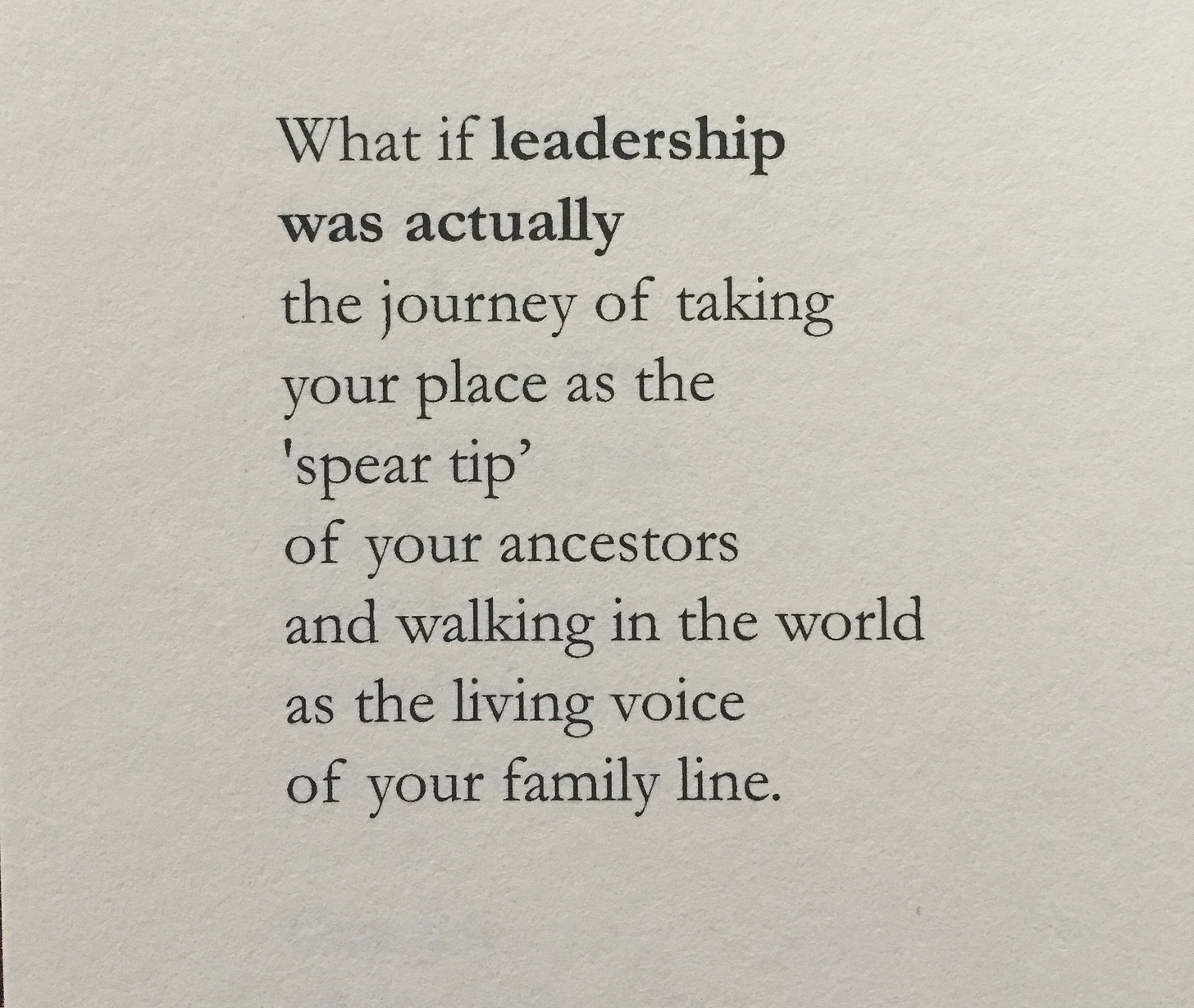
Firstly, in the interest of inviting deep culture and remembering into the colonized minds of those in the west and in the spirit of declaring my indigenous ancestral lineage and embracing my role as the “spear-tip” of my ancestors walking in the world as the living voice of the family line I will first introduce myself.
I am Gavin Mounsey.
The name Gavin is a name with Gaelic/Celtic and Greek etymological roots. It means "white hawk" and all the virtues long associated with the bird of prey. It also means "God send". It is a Scottish variation of the more ancient Welsh name Gawain.
The name Gavin can be traced back to pre-colonial Albion (where it was “Gabhainn” in Gaelic). It was used as a name, indicating a person's occupation or lineage. The name was often associated with those who worked as falconers, symbolizing their profession of training and handling hawks. As hawks were highly regarded birds of prey during that era, the name Gavin held a sense of nobility and respect.
Its introduction to Gaelic was no doubt influenced by the word gobhainn "smith", the root of the common surname Mac an Ghabhain or Mac Ghobhainn "son of the smith".
This is interesting to me as my great grandfather was a Bladesmith in Sheffield.
Even before I knew the meaning of my given name, I was always drawn to hawks on my parent’s farm.
There is a story of peoples that lived with deep reverence for the living Earth and those that lost their way and sought to dominate indigenous peoples for greed running through my veins.
On my mother’s side, my blood flows from the clans of Mag Uidhir and Fergus Mór (aka Fearghas Mòr Mac Earca or Fergus mac Echdach).
On my mother's mothers side I have blood from clan Mag Uidhir , a title which is rooted in the name of physicians, herbalists, lawmen and preists of ancient (pre-colonial) Gaelic Ireland, “the Magi of Éire” (aka the Druids).
The ancestors on my mothers father’s side (Clan “Labhran” in Gaelic) which are traced back to Fergus mac Echdach (aka Fergus Mór) once stewarded the Hebrides islands and the Isle of Tiree.
Fergus mac Echdach , brother and successor of Aodh Fhionn , was the last recorded king of the Dál Riata of Scotland.
My Father’s side has a mixed lineage of Cymry (aka Welsh), Íslendingar (aka Icelandic), imperialistic Rus' or Væringar (aka Nordic “Vikings”) and imperialistic British aristocracy, Celtae (Germanic Celts from the Gaulish culture) and ancient French nobility.

I am Gavin.
The blood of indigenous Gaelic clan leaders, medicine women, druids, kings as well as the blood of opulent occupying/colonizing aristocrats and those who could have been conquerors runs in my veins.
I refuse to continue the cycles of colonial thinking and the use of violence to violate other humans which is part of my ancestral family history. I instead embrace the non-aggression principle, strive to de-colonize my mind and will walk in this life as satyagrahi standing in solidarity with indigenous peoples globally against hegemonic entities.
In this life I honor the reverent Earth honoring ancestors in my family line and breathe new life into their ways at this time of the turning of the ages.
Beyond the Earthly heritage I have in the veins and bones of this sacred human vessel, my spirit was woven together where starlight meets the body of the Earth and a seed is sprouted.
Among the many paths I have walked on this beautiful Earth with many different names and looking through so many different sets of eyes at all the horrors and wonderous beauty the human family has brought forth, I have always been, and will always be moving towards being in greater service of life and of the Creator. I have always been (and will always be) opposed to tyranny, lies and oppression. Through all my lives here I have seen the living Earth as my greatest teacher (as through her intact living systems she holds the manifestation of the will and genius of Creator). I have always (and will always) stand up to speak for those that cannot speak for themselves. This has gotten me in trouble with established oligarchies many times before and it will likely do so again. I will persist.
My soul has braved many lifetimes and it will continue to live on eternally. I pledge to live in service of life and remember that no one can stop me, but me.
I seek to further move into becoming the embodiment of the irrepressible regenerative capacity of our Great Mother. I seek to further move into becoming the embodiment of the gentle and patient all encompassing love of our Heavenly Father. I am resilience, I am peace, I am like the water that can flow and crash, shape mountains and nurture a tiny seed to grow and become the beginnings of a thousand forests.
My names may been as numerous as the names of all the trees in the forest (that each offer their own unique gifts working towards a common goal). Just as the single tree is not a forest, this single human life is not the entirety of my being.
In this life, however, I am honored to have the name Gavin.
Now that I have introduced who I am and declared my being and life path, lets take a little journey to retrace the footsteps of my indigenous ancestors.
Below are a few windows into that past I have glimpsed through as I work to gather the shards of ancestral wisdom that remain and galvanize them together with the golden lacquer of modern knowledge, compassion and holistic thinking.
I hope those of you with Gaelic heritage (and/or those of you that are just curious to learn more about the indigenous culture(s) of Éire aka Ireland and Albion aka England, Whales and Scotland in general) will find this information to be enriching.
So, Who were the Druids? Is it true (as some would suggest) that the Druids were bloodthirsty savages and practitioners of the dark arts, practicing human sacrifice and other nefarious behaviors?
And if there were some of the ancients that were educated in the Druidic ways that chose such behaviors, does that mean they were all that way? Or that we have nothing worthwhile to learn from the Druidic worldviews today?
Here is a video I threw together that touches on some of this subject matter for those that prefer to listen rather than read:
I invite you to learn to speak the names of your non-human kin with words that were also spoken by your ancient ancestors, taste the same foods they enjoyed and nourished their bodies with, sing their songs and revive their blessings for the waters, wind and mountain peaks. Within these threads of your ancestral past you can awaken dormant seeds of knowing that weave through your bones, into your heart and through the fabric of your soul.
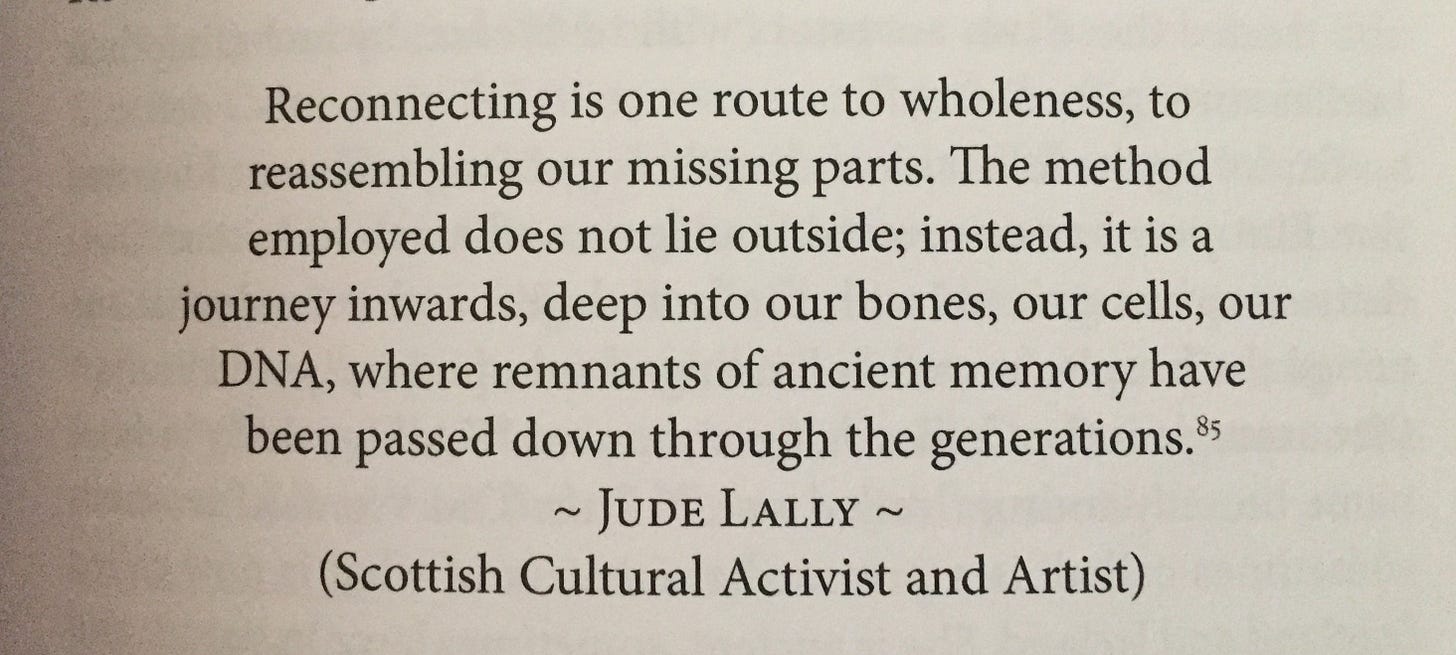
Many of our ancient indigenous ancestors recognized the sacred waters of the living Earth as living beings, imbued with a spirit, and as such, deserving of the same recognition and respect as any of our other kin.
Within ancient Gaelic cultures the springs, rivers, lakes and wells were seen as beings that have a spirit and innate rights. Under their Brehon Laws (known in the Gaelic language as 'Fénechas) the Gaels (Druids and their Brehon successors) acknowledged the living waters of the Earth had innate rights just as all human beings did (including equal rights for women, which at the time was far ahead of any other European laws for women). The Brehon Law defined our Kinship with Water, our responsibilities to respect her and offer blessings and express gratitude when we receive her gifts.
In ancient Japanese animistic tradition, every natural phenomenon,including rivers, are believed to be inhabited by a spirit called a Kami. In Japan, blessings for water are associated with Shinto spiritual beings like Suijin and Ryūjin, and with waterfalls and springs.
Suijin or Mizugami (水神, すいじん, みずがみ) is a general name for the spirit of water in Japanese animistic mythology. The term refers to the heavenly and earthly manifestations of the benevolent Shinto divinity of water found in lakes, ponds, springs, and wells. Marika Clymer offers more info on these concepts in her posts.
has also shared info with me about the ancient animistic worldviews of the African people’s of our human family.Many peoples of Turtle Island had similar traditions that spoke of the living waters in the rivers, steams, springs and oceans as their kin, and beings from which we can receive gifts, wisdom and should express our gratitude towards in different ceremonies.
Rather than build churches with walls that separate humans from the sacred inspiration and embodiment of Creator's design, many of ancient animistic indigenous cultures chose to recognize and/or create spaces for prayer, sacred ceremonies, knowing the will of the Divine and blessing rituals that were centered around flowing springs, sacred groves of trees and/or sacred wells.
People visited the springs and wells for their traditional virtues of healing and divination. In the time of the Druids and the Brehon, sacred trees of the Ogham were planted as both offerings to the water spirits and to serve as guardians of the springs and wells. If a physical cure was sought, the seeker would drink or sometimes bathe in the water. And in fact, the water of some holy wells have indeed been found to contain curative properties, mostly due to the presence of certain minerals. But the healing influence of the wells was due to more than their medicinal qualities. The well or spring itself was viewed as a shrine dedicated to the miraculous emergence of living water, in all intact indigenous cultures, it is a symbol of generation, purification, and the matrix of life itself. To quote Mircea Eliade, ‘…water symbolizes the whole of potentiality; it is fons et origo, the source of all possible existence.’
Spiritual qualities automatically cluster about the manifestation of such a powerful archetype. The holy wells of Albion (aka the British Isles) were, in fact, such popular places of worship in pre-Christian times, that the early Roman Church took great pains to stamp them out. But, as is the way with an insuppressible archetypal force, the forms changed while the essential mystery continued unaltered (becoming part of new traditions with quasi-Christian trimmings).
These sacred groves, sacred springs and sacred wells were tended reverently for millennia, in many cases becoming spectacular old growth forested habitats that simultaneously provided a space for ceremony, blessings and worship for connecting with Creator while also providing habitat for our non human kin and also protecting the waters. However, as was well documented in Fred Hageneder's book "The Spirit of Trees: Science, Symbiosis and Inspiration", the Christian church began an aggressive crusade to destroy these sacred groves, sacred wells and sacred spring sites in an effort to destroy the cultures of all peoples they deemed as "heathens", "savages" and "pagans" starting around the year 723 AD in Europe.
Traditional ethnoecological worldviews of many of the pre-christian animistic indigenous cultures described above had recognized a relationship between trees and rain (eg. indigenous peoples had, and have place based wisdom that taught how the trees invite and call the rain to them). As Zach Weiss points out in his water restoration works, those worldviews are now being proven to be accurate my modern day science.
Within the Druid tradition–along with many others–are full of stories about sacred waters. From the Chalice Well in Glastonbury to the invocation of the “Salmon who Dwells Within The Sacred Pool,” water was viewed as a being and it was a sacred responsibility to care for her in the traditions of my ancestors.
The legacy of the polar opposite of that ancient animistic indigenous worldview (which was imported here to Turtle Island by anthropocentric statist regimes and imported to Albion by other statist regimes in earlier centuries) involved/involves the systematic multi-generational brainwashing of the population to no longer regard the living waters as a relative, a being and kin deserving of reverence, but instead to view her as nothing more than a "resource" to be owned, extracted, commodified, bottled and sold.
Many centuries after the introduction of those imported anthropocentric worldviews regarding the sacred waters, many of us on Turtle Island (and elsewhere) no longer no the joy of being able to dip a cup into a stream, river or spring and drink safe living waters. Most of the living waters have been poisoned by governments and the corporations that dominate those subservient statist regimes and due to exploitative water extraction, diversion and hydroelectric misuse many of the living springs and wells that were tended by and assessable to people for millennia in these lands have run dry.
The statist regimes we happen to be born within are now very fond of talking about "sustainable development", yet the kinds of "development" they have been sustaining for centuries now have resulted in the poisoning of the rivers, the ground waters, the drying up/diversion of aquifers for power corporations and the poisoning of the Great Lakes.
This trend of "sustaining" their toxic, anthropocentric and hubristic way of "developing" continues today in northern Ontario and Quebec where our government is greenlighting the destruction of over two hundred thousand hectares of pristine Boreal Forest, rivers and lakes for open pit lithium and cobalt mining (to meet their EV "sustainable" development goals). Hard rock lithium mining involves deforestation, draining lakes and rivers, blowing the land into pieces with explosives, carving deep gashes into the Earth with giant machines, using truckloads of industrial solvents like sulfuric acid (resulting in water contamination with toxic sludge) dragging that processed rubble to processing facilities with fleets of heavy machinery then processing the ore with extremely high energy furnaces using another slew of toxic chemicals (which further contaminate the water table, lakes, rivers and ocean elsewhere).
What I describe above is what results when we allow our energy to flow into systems of governance that are driven by anthropocentric worldviews and that should highlight the moral imperative of divesting in such systems and instead reviving the animistic ways of our ancient ancestors.
That is why I feel that creating Biocultural Refugia is so important and I feel that applying the concepts I discussed in my presentation on that concept in the context of creating sacred water sites for ceremony and prayer is an extremely important expression of biocultural refugia. Those of us that are blessed to steward riparian habitat, river banks and springs can plant the seeds for new Sacred Groves and co-create (and/or revive) traditions and ceremonies that honor and heal the living waters that we can pass onto future generations.
Some are working within the imported systems of law to grant bodies of water legal personhood (such as New Zealand’s Whanganui, United States’ Klamath, Colombia’s Amazon, Canada’s Magpie river) as a way to protect them using the language of modern western civilization and I admire their noble efforts, but I would also encourage us to each plant more decentralized seeds for cultural revival, creating new sacred groves, sacred spring traditions and helping these traditions to become an integral aspect of our local communities. In doing so, we plant the seeds for a multi-generational movement of love, tradition, courage and nurturing of these places to become a more powerful incentive to protect them than any government bribe or threat ever could provide.
This is a call to all who wish walk the path of satyagraha and use their time on Earth to heal our relationship with the land and the elements. I speak to those of you who wish to give your energy and time to nourish all life to thrive.
That is exactly what my presentation on Designing Biocultural Refugia is all about. I hope you will apply some of the concepts I shared and offer your own ideas for how we can plant the seeds of ancient animistic wisdom within our modern day communities to set down roots, heal our relationship with the living waters, the living soil, the oceans, mountains and tall rooted beings and so that we can become ancestors worth descending from.
------------------
Cha bhi fios aire math an tobair gus an tràigh e.
(The value of the well is not known until it goes dry.)
-Scottish Gaelic Proverb
For many of us with European Indigenous Ancestral roots, our ancestors were persecuted by various imperialistic regimes and characterized as “witches”, “savages” or “uncivilized”.
Lyla June explores this lost European indigenous history in an essay published on in The MOON magazine titled “Reclaiming our Indigenous European roots”
The following are some excerpts from that essay:
"They estimate that 8-9 million European women were burned alive, drowned alive, dismembered alive, beaten, raped and otherwise tortured as so-called, “witches.” It is obvious to me now that these women were not witches, but were the Medicine People of Old Europe. They were the women who understood the herbal medicines, the ones who prayed with stones, the ones who passed on sacred chants, the ones who whispered to me that night in the hogan. This all-out warfare on Indigenous European women, not only harmed them, but had a profound effect on the men who loved them. Their husbands, sons, and brothers. Nothing makes a man go mad like watching the women of his family get burned alive. If the men respond to this hatred with hatred, the hatred is passed on. And who can blame them? While peace and love are the correct response to hatred, it is not the easy response by any means.
The Indigenous Cultures of Europe also sustained forced assimilation by the Roman Empire and other hegemonic forces. In fact, it was only a few decades ago that any Welsh child caught speaking Welsh in school would have a block of wood tied to their neck. The words “WN” were there-inscribed, standing for “Welsh not.” This kind of public humiliation will sound very familiar to any Native Americans reading this who attended U.S. Government boarding schools..
..The parallels between the genocide of Indigenous Europeans and Native Americans are astounding. It boggles my mind that more people don’t see how we are the same people, who have undergone the same spiritual assault. The only difference between the Red Story and the White Story is we are in different stages of the process of spiritual warfare. Native Americans are only recently becoming something they are not. They are only recently starting to succumb to the temptations of drugs, alcohol, gambling, self-destruction and the destruction of others. Just as some Native American people have been contorted and twisted by so many centuries of abuse, so too were those survivors of the European genocide. Both are completely forgivable in my eyes..
..Our task is to shake the amnesia. To not be ashamed of our European-ness, but to reclaim our beautiful grandmothers, to reclaim our venerable grandfathers, to reclaim our lost languages, our lost ceremonies, our lost homelands and become one with the Great Sacred Motherland of Europe once again. The European diaspora is spread all throughout the world, searching the planet for something that lives inside. I promise you will hear it when you climb the mountains of Switzerland! Of Scotland! Of Tuscany! Of Hungary! Of Portugal! Of the Great Sacred Motherland of Europe! Just because bad things happened upon her bosom does not mean she is bad."
- Lyla June
For a more in depth exploration of that topic watch this:
Hiraeth is a Welsh term that does not translate to English. It conveys a blend of homesickness, nostalgia and longing for a place that one has never been before in this particular lifetime. “Hiraeth” is a pull on the heart that conveys a distinct feeling of missing something irretrievably lost in the physical world.
Hiraeth also gives a name to that sense of incompleteness you feel when you’re acutely aware of something missing in your life. Something you’ve left behind in the deep past – a home, a sense of feeling at home in yourself, an out-grown dream – or maybe an ideal you’ve invented that can never be realised, or a hope that perpetually eludes you as the future unfolds. At its core, hiraeth boils down to an awareness of the presence of absence, kindling a feeling in which pain and joy are braided too tightly to untangle.
Words and language are indeed powerful forms of magic and from the little bit I have learned of indigenous languages from Turtle Island (and now also having begun to learn some Gaelic and Welsh words) I can say that there is a significant difference in the type of magic wielded within their languages as compared to English.
The English language is structured to re-enforce anthropocentric delusions of grandeur, relegating all our non-human relations on earth to the demeaning status of being an “it”. Older languages with an animistic ethos of deep belonging to place do not refer to the trees, or the birds, or the fish, or the river or the mountain as an “it”, they refer to those beings as kin.
These variations in language in how we refer to the beings we share this world with may seem inconsequential to the indoctrinated self-important statist that trusts “The Science”, but ask yourself this, how much easier is it to train human beings to be willing to poison a river, or carve into a mountain for lithium or clear cut an ancient forest for profit when you raise them describing those beings as inanimate objects, rather than referring to them in the same way you would refer to a sister or a grandfather?
Reconnecting to your ancestral knowledge and awakening ancient re-membering is a path that aligns you with the powerful magic that is unlocked when one takes the time to learn the names and forgotten languages of the rivers, ancient trees and mountain peaks again. It is the magic that the ancient ones wielded when they studied the stars, the sky, the mountain spring and learned to listen to their secrets, connecting in communion, giving thanks, receiving their gifts of wisdom. We to can embark on such a path if we awaken the dormant seeds deep within and nurture them to set down roots in our day to day routines, habits, perspectives and traditions.
For many of us, the severance of our present day existence from our ancestral indigenous past may have (as was and is the case for many indigenous peoples) began with the genocide of our great (great times 7) grandmothers and grandfathers.
For more on this, here is a song and some writing by Lyla June
From the description section below the video above:
“As a biracial woman (Native American/European), I thought it would be good to take the time to write this song to honor all of my grandmothers (and grandfathers) who were burned alive, drowned alive, raped, beaten and tortured in torture chambers for being so called "witches" and "warlocks" (https://www.nfb.ca/film/burning_times/).
I know that these people were not evil, but rather were the carriers of Indigenous European knowledge that was demonized by colonizing forces, just as my Native American ancestors were demonized and persecuted. This is a wound that we as Europeans have yet to heal face, forgive, and heal from. If we can find the courage to heal from this, I believe we could break many cycles and resolve much untended intergenerational trauma, to help not only European folk, but all those who are affected by our unresolved trauma.
Our elders have taught us that any assault on the women of a society is also an assault on the men who love them. Imagine having your wife, or daughter burned alive and being restrained from helping her. This is what so many of our grandfathers went through and it drove them purely mad. We must too pray for the soul of the masculine that was tricked into thinking it was insufficient, tricked into thinking it "failed to protect." These are all psychological tactics to make us hate ourselves across the board and have damaged us for too many generations. This is healed through self-love and the forgiveness of this unimaginable cruelty of others. It is time to throw off these chains and throw off these lies and affirm our sacredness and worth as men and women in the eyes of Creator.
I named this song Mamwlad (Mah-Mu-Lahd), which means "Motherland" in the Welsh language. In the 1920s, if you were caught speaking Cymraeg (Welsh) in school you would get a big block of wood tied around your neck with the letters W.N. there inscribed. This stood for "Welsh Not," and you could only get the wood off your neck if you caught another child speaking welsh (https://en.wikipedia.org/wiki/Welsh_Not). The prohibition of this Indigenous European language is one example of many of how our ancestral, earth-based culture was suppressed and destroyed much like my Native American ancestral culture was.
It is time for all of us to return to our indigenous selves and this includes Europeans. It is time for us to look behind the thin wall of time that dominates our understanding of Europe--the time of King Edward I who ordered the massacred of 100 harpists and bards of the Celtic Nations, the time of Napoleon, the time of Hitler--and remember who we truly are, beneath all the trauma and rubble. It is time to reach into the time of Indigenous European culture evidenced by a figurine of a woman, symbolizing the sacred earth and the sacredness of women, found in German soil in 2009, whose radiocarbon dating indicated that it was at least 40,000 years old. It is time to remember that this is who we really are.
And, it is time to forgive. For when we do not forgive, we become the oppressor, as we perpetuate the violence that we experienced on other peoples the world over. We have the power to help this end immediately for the sake of generations of human beings of all ethnicities worldwide. In sum, if we find the courage to face the truth and love through it, the way all great leaders have done throughout time, we can heal 7 generations forward and 7 generations backward. We have this power to transmute that darkness into hope and become the humble examples of healing that we as European descent folks are capable of being.
We must also recognize that witch burning still occurs today in many countries around the world (https://www.reuters.com/article/us-re.... I hope we can unite to heal the past, the future and the present day to say no woman should ever be killed because of her spiritual practice. Please join me in this musical, cinematic journey, filmed in the ancient sacred homelands of Gaelic, Celtic and Welsh civilizations, blessed by wild ponies, and connected to local Indigenous women of contemporary time.
In this time of extreme deforestation, cultural imperialism, colonialism, multi-generational amnesia, globalization, “sustainable development”, and all time low levels of ecological literacy we can use a slight shift in perspective to reframe these realities as opportunities in disguise.
Through embracing an animistic and relational worldview with the living Earth, you are invited to realize that each time you make a choice that nourishes, respects and enriches her, you are nourishing, respecting and enriching yourself... and each time you make a choice that degrades, harms and pillages her, you are degrading, harming and pillaging yourself.
Consider water for instance, we are made of mostly water as human beings, and yet many of the cultural norms in modern industrial civilization involve pillaging and polluting the sacred waters.
Yesterday I wished you all Imbolc Blessings.
In ancient Celtic tradition, today was celebrated as Imbolc, or later as St. Bridget's Day.
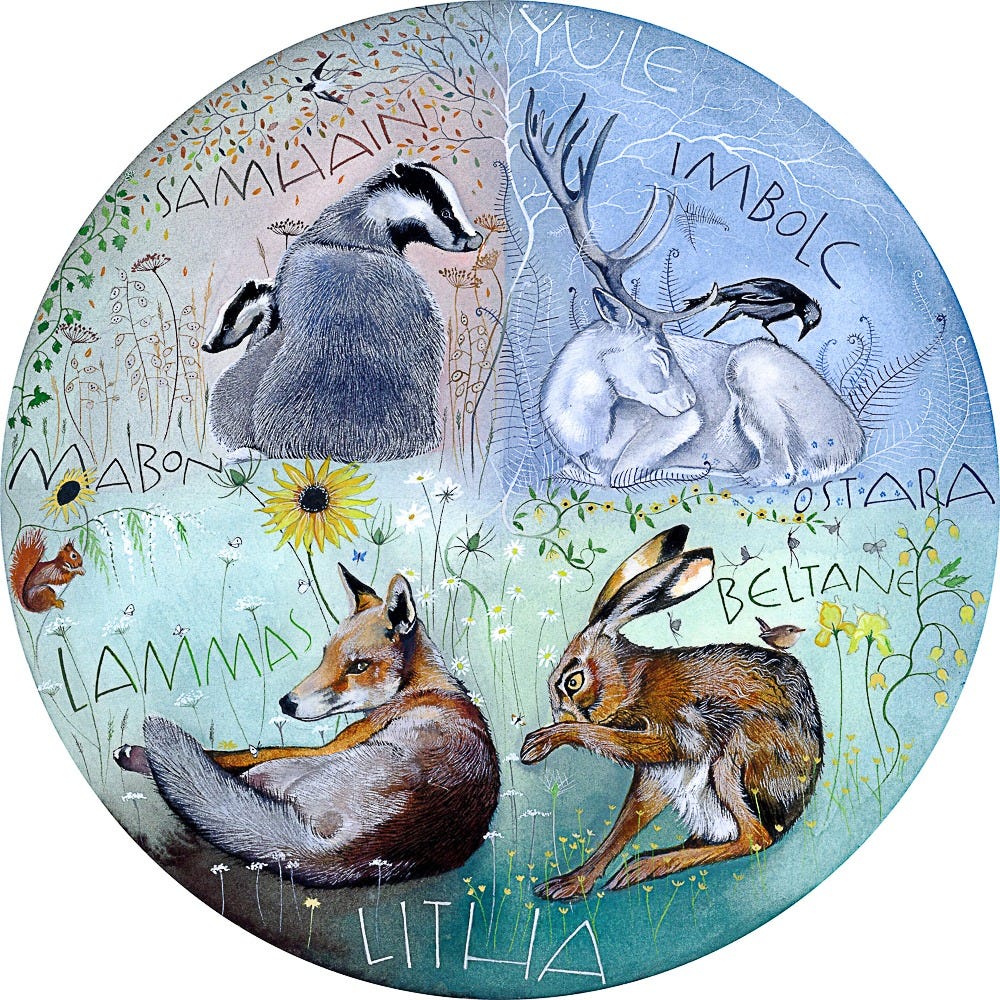
Throughout the seasons Solstice and Equinox formed markers for the passage of time, while the main ancient festivals all fall on cross quarter days which are days which mark the midpoint between solstices and equinoxes. The four festivals are named Samhain, Imbolc, Beltane and Lammas, and each also mark the beginning of a season since astronomical alignments of ancient monuments were built by the ancients.
Imbolc is known as the quarter day between the Winter Solstice and the Spring Equinox.
Imbolc is a celebration of the first stirrings of spring coming back into the land. For people living in temperate parts of Turtle Island (aka North America), particularly on the eastern seaboard, the timing can be challenging–we are in deep winter and there aren’t always clear and visible stirrings of spring.
Today I took some Pawpaw seeds out of my fridge, some ramp and American ginseng seeds and went into the forest to plant them under the frozen leaf litter, gently digging until I found living earth under the permafrost and lovingly covering those living embryos with soil and leaves so that they may wake up once it warms up here. I also planted some ginger rhizome sections to begin the symbolic awakening of our 2025 garden :)
I felt compelled to align my energy and time with the cycles of nature and those two activities along with sorting seeds indoors allowed me to align with this practice of my ancestors and the heartbeat of the living Earth.
Imbolc. This ancient festival, rooted deep in the Celtic tradition, isn't just a quaint relic of a bygone era; it can also be call for a radical awakening, a defiance against the modern narrative that seeks to alienate us from the very essence of life itself.
Think about it. In our industrialized frenzy, we've become so detached from the natural rhythms that our ancestors once intimately understood. We live in a world where the cycles of planting, growth, and harvest have been replaced by the ceaseless cycles of production and consumption. Our connection to the natural world has been severed, replaced by a sterile interface of concrete and screen. We've lost something fundamental — our intrinsic link to the rhythms of the earth, the understanding that we are not separate from but a part of this living, breathing organism we call home.
Imbolc comes at a time when the Earth begins to stir from its winter slumber, this year beginning at sundown (the Celtic tradition of day’s end) on February 1st. It's a time of potential, of the first subtle stirrings of life beneath the frost. It represents a purity, a renewal, a beginning from the depths of darkness. Yet, how many of us feel that stirring in our own lives? How many of us even take the time to notice the lengthening of the days, the subtle shifts in the air, the buds beginning to form on bare branches?
In the grip of modernity, many are losing their souls. We wander, disconnected, through a world where our worth is measured in productivity, our identity found in consumption, and our connection to the sacred reduced to something we might find time to consider after the day's work is done, if we're not too exhausted by the soul-crushing grind of the industrial machinery.
Celebrating Imbolc, then, is a revolutionary act. It's a rebellion against the narrative that human beings are separate from and superior to the rest of the natural world. It's a refusal to continue participating in a culture that values profit over life, growth over regeneration, consumption over connection. When we plant a seed or light a candle for Imbolc, we're not just following an ancient tradition; we're reigniting the flame of resistance against a culture that seeks to dim our connection to the earth and to each other.
Planting a seed or Lighting a candle isn't going to stop the bulldozers, halt the factories, or clean the oceans. What it can do, however, is serve as a symbol of our awakening, a first step in reclaiming our power, our agency in the face of an industrial complex that seeks to render us passive consumers. It's a declaration that we're no longer willing to be cogs in the machine, that we seek a deeper, more meaningful connection to the living world around us.
Imbolc is a call to remember what we're fighting for: a world where the cycles of life are respected and revered, where communities are built on mutual aid and respect for the earth, where our actions are guided by the understanding that we are but one part of a much larger, intricately connected web of life.
So, as we move beyond the threshold of Imbolc, let us embrace this ancient festival not just as a quaint tradition, but as a rallying cry for a new way of being in the world.
Let it be a time of purification and decolonization, not just of our homes, but of our hearts and minds. Let us plant seeds, not just in the soil, but in our communities, seeds of resistance, of hope, of a new vision for a world that values life over profit, connection over consumption, and the sacred rhythm of the earth over the relentless march of industrial progress.
One of the ways I like to embrace this type of resistance against the homogenizing march of industrialism, is to secretly plant the seeds for engendered food and medicine plants in the forest parks here, guerilla food forest gardening, planting the seeds for the next 7 generations, honoring the increasing light and abundance at this break of the dawn at the turning of the ages.
Parallels between Indigenous Cultures that illuminate the value of natural medicine and speak to the ubiquitous acknowledgment of the animistic wisdom that sees our non-human kin as deserving of reverence and respect.
After learning about the ancient sweathouses of the Gaels (of Éire aka “Ireland”) recently and how they built permanent stone and earthen sauna/sweat lodges where the Druidic physicians would prescribe the burning of specific medicinal herbs (such as Juniper and chondrus crispus aka “Irish Moss”) I updated my article on Regenerative Ocean Gardening with this important (nearly forgotten) ethnobotanical info.
It appears that despite being separated by an ocean, the Gaels shared many similar traditions and worldviews to some of the ancient cultures of Turtle Island (in that they revered the water, the trees, the living Earth, cultivated/or created habitat for enhanced tidal zone foraging/gardening, used sea weed as food and medicine, and they burned sacred herbs in sweat lodges to heal, detoxify and strengthen the body and receive visions).
Perhaps it would be more apt to say that they were connected by an ocean (and their reverence for her) rather than saying they were separated.
Similar to the powerful healing properties of cedar and sage (often burned in sweat lodges here on Turtle Island) the Juniper and Irish Moss that were burned in the ancient Irish sweat lodges also offers anti-bacterial, immunomodulating, anti-viral and respiratory tract cleansing medicinal benefits. And like the Hop Tree (Ptelea trifoliata) and Ginseng (Panax quinquefolius) cultivated and used as medicine by the indigenous people of the Eastern Woodlands of Turtle Island, the Irish Moss (chondrus crispus) prescribed by Gaelic medicine women and men also had (and has) the ability to potentiate the efficacy of other medicinal plants (increasing their potency by a magnitude of ten in some cases) meaning if you eat a little bit of a another medicine plant/fungi along side one of those it goes a long way.
Also, I had attempted to articulate how deeply connected the deciduous forests are to the well being of the ocean beings, kelp forests and salmon in my article, but Diana does a much better job explaining it. You can find excerpts from her newest book that elucidate on how intimately connected forest ecology and ocean ecology are in the article linked below.
Have you ever heard of the Scoil Ghearr (the secret Hedge Schools of Ireland)?
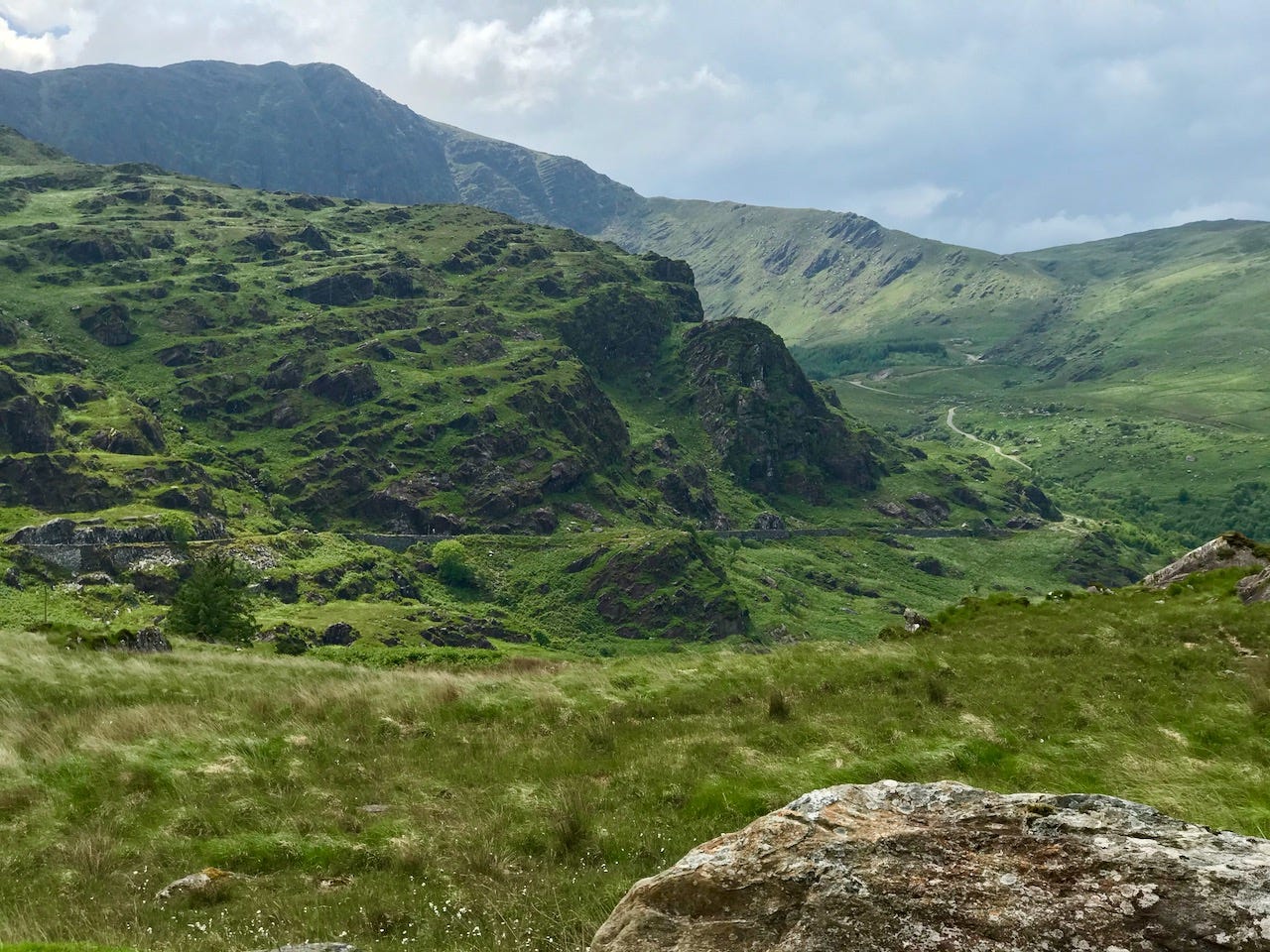
In these pages of Diana Beresford-Kroeger’s most recent book shown in the pics below she offers a vivid glimpse into what might be described as the Gaelic antithesis of the imperialistic “residential schools” and “boarding schools” of Turtle Island.
My dear soul sister
shared this insight with me recently:“The ancient Celts were a forest people. They loved the Trees. The Trees were a source of wisdom and medicine for them. In the Celtic tradition, the Trees were the first shamans.”
She expands on this further in her first post on Substack which you can read below:
The knowledge keepers of the Gaels (“Eolaí” in Gaelic) risked their lives to teach the young ones about the wisdom of the ancients that heals, illuminates, empowers and humbles in these “hedge schools” high in the mountain mist. They taught of the combined memory of medicines, conflicts, natural disasters, geology, meteorology, pathways to peaceful resolution and stories that educate the listener about astronomy, mathematics and ecology into rhymed verse in Gaelic.
The penalty for doing this if they were caught by British at the time was to be hanged, drawn and quartered.
In the times before Christ, Ireland was known as a place of advanced learning and young nobles from kingdoms far and wide were sent by their families to study with the Druidic teachers before returning home. This illustrious culture of higher learning was almost totally annihilated by the imperialistic Roman invasion.
The period of the hedge schools followed the relentless destruction of the ancient professional schools of Ireland known as the Bardic Schools of the Brehon/Druidic ways.
Even after the Romans sought to commit cultural and literal genocide, the Druids were wise enough to preserve their knowledge in a small few individuals and pass it onto who would become the Brehon.
The Bardic Schools had existed as renowned institutions instructing in the native tongue the Irish language, literature, history and Brehon Law. They were highly developed and scholarly institutions providing what amounted to a university education in multiple subjects of study up until the middle of the seventeenth century. This long tradition had produced an abundance of poets, physicians, historians and Brehon’s – skills and knowledge which was often found overlapping in individuals.
Thanks to the courageous Eolaí (Gaelic knowledge keepers of the Druidic/Brehon ways) of the hedge schools and the harpists of the Scottish highlands (which preserved the Druidic knowledge “wrapped in the thread of poetry”) we still have pieces of their wisdom to help guide us forward.
We must dig deep now and find the courage to re-awaken our ancestral knowing, connect with the intelligence of the living Earth as our ancestors did, use our own innate gifts to merge the fragments we have left behind and create our our “hedge schools” nested within decentralized food and medicine production systems (or “Bio-Cultural Refugia” as I described them in my recent presentation). We must let go of our fears and realize that we are the ones we have been waiting for.

Deep in each of our ancient pasts are ancestral lines of indigenous peoples that had a place based connection to our great Mother Earth. Here on Turtle Island the wounds of Colonialism are still fresh, and courageous healers, knowledge keepers and emerging elders like Lyla June are leading the way to Re-member and reconnect our human family in the spirit of being stewards and protectors of the Earth.
Others such as Matthew Liam Gardner walk a similar path in sparking a deep Re-memberance in our human family and inviting us to embrace our ancestral elders and their wisdom to help guide us forward.
For many of us, the wounds of colonialism are less observable in the physical in present day, yet they run more deeply, and they exist in the sub-conscious realm of multigenerational amnesia and programming.
As Lyla June has astutely pointed out in other works, the boarding school/residential school situation on Turtle Island was/is not only true of how the statists sought to annihilate, assimilate and pillage the cultures and lands of the diverse peoples of Turtle Island. It was also true (and is still also true) for how statist regimes have sought (and continue to seek) to do the same to other people who lived (and live) in close relationship with the living Earth all over the world.
This was true of my blood ancestors in the Druidic (and then eventually Celtic) nations and it is true now in how the Canadian government and corporations are imposing their will upon those people who live in areas where profitable minerals exist in the ground that they want to get their hands on (in the Boreal Forest).
Many in modern times have been conditioned to see the ancient Druids and their Celtic predecessors the Brehon (Breitheamh) Judges as "savages". This is also nothing more than the sad propaganda of a socially, agriculturally and scientifically inferior involuntary governance Statist regime attempting to erase the cultural accomplishments and memory of those they sought to silence and dehumanize in the name of imperialistic conquest and greed.
The Druidic wisdom keepers encapsulated their combined memory of medicines, conflicts, natural disasters, geology, meteorology, pathways to peaceful resolution and stories that educate the listener about astronomy, mathematics and ecology into rhymed verse (often recited as part of a song with harps or flutes). Those concentrated expressions of their culture were passed down to the time of the Celts arriving and were then written down in Ogham on stone and wood to become the Brehon (Breitheamh) Laws (or Fenechus).
They had laws to honor and protect the bees and the trees and saw men and women as equals (long before anyone in Europe).
The first recordings of the Brehon (Breitheamh) Laws were made around the year 700 BC. They were collected (not invented) by a great Breitheamh (judge) named Ollamh Fodhla and inscribed into Ogham in stone and on elongated wooden panels. These were said to be the written form of laws, ways of seeing and knowledge with much more ancient roots and deep history in that land which was (up until then) passed down through the form of rhymes and verse (in the form of music).
The Roman church began attempting to erase that cultural history in the year 438 AD when monks were sent to gather all the Brehon laws (recorded on wooden panels and stone) and transcribe them (censoring that which did not align with the Christian views of the world and our place in it). The Christian statist interlopers gathered the sacred laws of the Breitheamh in Teamhair na Rí ('Tara of the kings'), and formerly also Liathdruim ('the grey ridge') and after transcribing them in what they described as a ”purified” form (meaning censored, altered and redacted) they destroyed all the original Ogham writing they could get their hands on. This attempt to steam roll the old Druidic ways and distort Brehon Law to serve as another tool for indoctrinating and assimilating the Celtic people failed as much of the Ogham which recorded the ancient knowledge was carved into large stones all over the land in hidden corners, cliffs and boulders.
The ancient knowledge keepers (Breitheamh or “Brehon” judges) of the time saw what the Roman Christian church was attempting to do and so they made sure to infuse their wisdom into verse “wrapped in a thread of poetry” and taught these songs to the bards and townsfolk far and wide to preserve the essence of their culture.
This wise covert approach to preserving their cultural wisdom persisted for well over a millennia until it again came under direct threat from statist regimes that sought to erase the past and impose their degenerative involuntary governance structures upon the Celtic tribes.
That is why the statists of the British monarchy (queen Elizabeth) ordered her thugs to "Hang harpers, wherever found, and destroy their instruments".
Harpers, however, were not the only Irish treated with such hostility. In an attempt to gain control of Ireland, laws were enacted by the English Crown making it illegal for the Irish to speak their language, own land, become educated and to marry. The penalty was death.
This forbidding of the bards from reciting their verses in their native Gaelic tongue (under penalty of death) was similar to how the Canadian Government would later force the First Nation children of Turtle Island into concentration camps (euphemistically called “residential schools”) cutting off their hair, forbidding them to speak their language and thus attempting to sever the hereditary line of knowledge which was passed down in verbal stories in their own language.
Between 1650 and 1660, Oliver Cromwell ordered the destruction of harps and organs. Harps were burned and harpers were forbidden to congregate. Despite this, various records indicate that some Highland chiefs retained their harpers well into the eighteenth century, and place names such as Harper’s Pass, Harper’s Field (both on the island of Mull), Harper’s Window (Isle of Skye) and Harper’s Gallery (Castlelachlan in Argyle) remind us of the one-time importance of the harp in these areas.
The truth is, that like the Indigenous peoples of the Eastern Woodlands of Turtle Island (what is now called "Canada") the Druidic way of seeing, living and interacting with our fellow beings on this world (which was passed down to their Celtic descendants) represented a clear example of how people can live, prosper and interact without the existence of a state (centralized involuntary governance structure). Those people who were speaking the languages of those ancient ways of being, living in close connection with the land and in a stateless society were seen as a threat to the imperialistic statists who were attempting to impose their degenerative and unnecessary systems of domination on those two separate continents.
Thus, the First Nation children were kidnapped and threatened not to speak their ancient language nor tell the stories of their ancestors, the orders were given to round up and murder the Celtic harpists and bards in an attempt to erase what the Jesuit Priests described as "Wicked Liberty" from the collective cultural memory.
Thankfully the statist thugs and agents of involuntary governance failed to kill and silence all the story tellers, and this ancient wisdom offered by these windows into our shared history persists despite their despotic and vicious attempts. Thanks to the brave story tellers, rhymers and covert harpists of the highlands we have glimpses of a trail map that is both ancient and socially advanced, and can help us find sign posts as we trail blaze towards a more regenerative, honest, equitable, compassionate and hopeful future.
Each of us must now summon the courage to do the same with our own ancestral lineage, to De-colonize our minds (no matter what color your skin is) and Re-member our ancestral past, excavate the wisdom of the ancients that knew how to listen to the trees speak, structure the water with their words and prayers and serve as stewards of the Earth in alignment with Creator's regenerative design.
Techno-optimism, bright green environmentalism and transhumanism represent cowardice and running away from the past. The current dominant systems on Earth feed into that unwillingness to look long and hard at our strange, painful, complex and beautiful past, honestly looking at the scars of the heart so we can use them as maps for the soul. Each of us can choose to be trail blazers and light the way forward in each of our communities to light the way and plant the seeds for the next 7 generations that will come after we are gone.
The light we need to illuminate that path is found within us, waiting to be awakened in the seeds we can collect from the wilderness of our ancestors indigenous souls.
Below is another example of the importance of reviving the animistic worldviews of our indigenous ancestors and enacting those views at the laws we live by.
Here is a clip from my Biocultural Refugia presentation speaking to how one with no written records of their indigenous ancestors can begin to awaken ancestral knowing and memories:
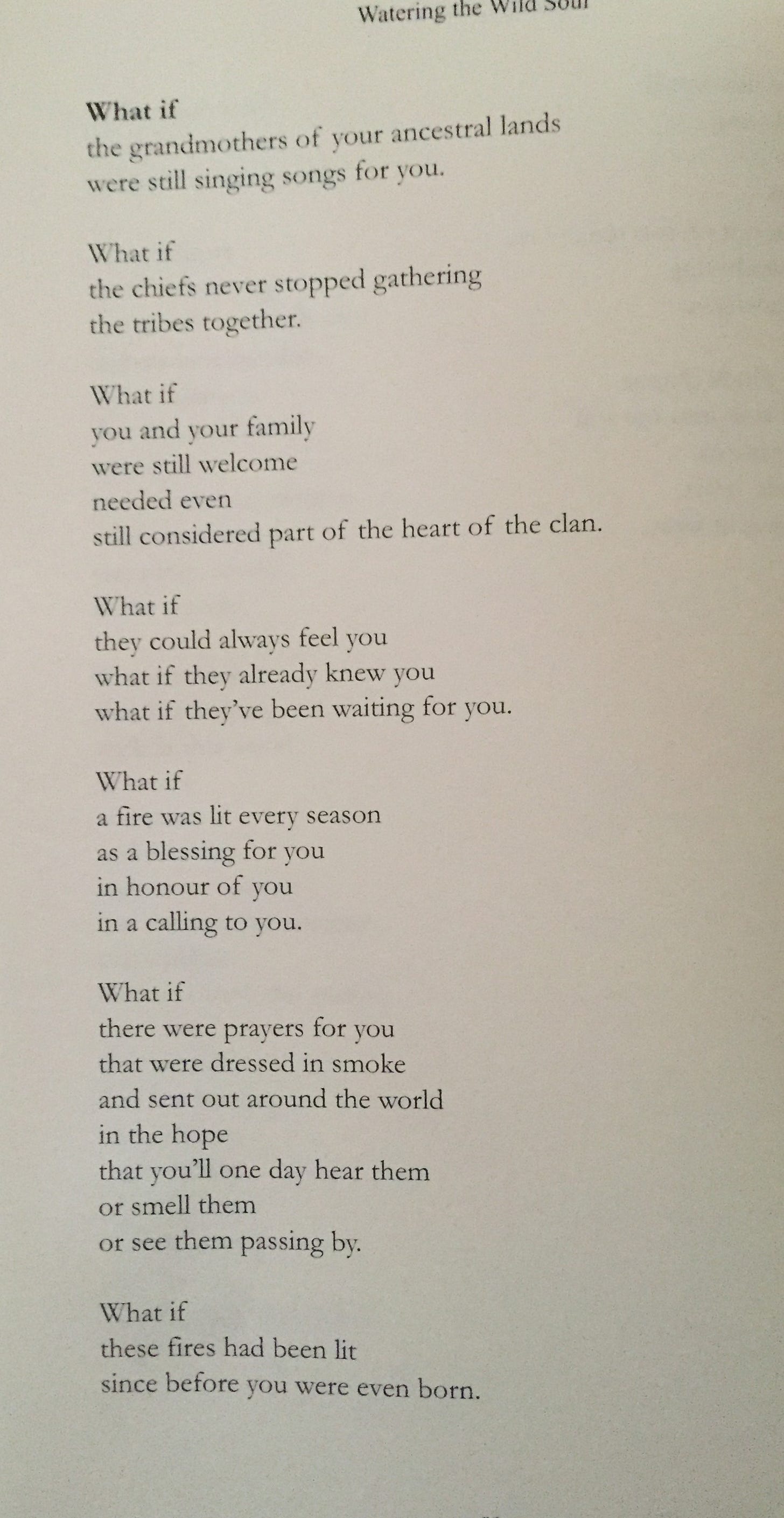
For more info on Brehon Law and the ancient (pre-statist/pre-colonial) indigenous culture of Ireland and Albion (England, Whales and Scotland)
Why Involuntary Governance Structures are Not Compatible with The Permaculture Ethical Compass
This post is going to be an exploration of the nature of involuntary governance structures (Statism) and an exploration of cultures and peoples that existed without a centralized state system.
Gaelic culture inspired music
The Lost Words Blessing:
“Enter the wild with care, my love
And speak the things you see
Let new names take and root and thrive and grow
And even as you travel far from heather, crag and river
May you like the little fisher, set the stream alight with glitter
May you enter now as otter without falter into water
Look to the sky with care, my love
And speak the things you see
Let new names take and root and thrive and grow
And even as you journey on past dying stars exploding
Like the gilded one in flight, leave your little gifts of light
And in the dead of night my darling, find the gleaming eye of starling
Like the little aviator, sing your heart to all dark matter
Walk through the world with care, my love
And sing the things you see
Let new names take and root and thrive and grow
And even as you stumble through machair sands eroding
Let the fern unfurl your grieving, let the heron still your breathing
Let the selkie swim you deeper, oh my little silver-seeker
Even as the hour grows bleaker, be the singer and the speaker
And in city and in forest, let the larks become your chorus
And when every hope is gone, let the raven call you home”
(Thank you for sharing this song with me Patricia Burke)
“The hull of the ship that plows the sea
The ink that keeps our history
The axes half that fells the tree
That fells the tree…
The poplar is the whispering tree
And the rowan is the sheltering tree
The willow is the weeping tree
And the oak is waiting…
..The wheel that makes the seasons turn
The beasts that shelter in the barn
This table that we sing around
And the casket we put in the ground…
…Three hundred years to grow
Three hundred more to thrive
Three hundred years to die
Nine hundred years alive.”
from “Oak”, of the Spell Songs II album: “Let The Light In”
"The creation of a thousand forests is in one acorn"
Do you have any suggestions for Gaelic music or Gaelic culture inspired music I could add here? Please comment below if you do.
For more on the quest to excavate our shared indigenous ancestral roots and apply their wisdom to create emergent cultures in the present read:
Germinating The Ancient Seeds Within - embarking on a journey towards an ethnoecologically rooted regeneratively guided Ethnogenesis
In this essay I will be exploring the concept of uncovering, remembering, re-tracing and re-awakening the seeds of wisdom left by each and everyone of our indigenous ancestors and cultivating those seeds in order to produce the harvest of fruit that takes the form of a process of ethnogenesis that is accessible and open to all with the courage to tend t…
Thank you for coming on this journey with me to re-trace the footsteps of my indigenous ancestors and other ancestral lineages, learn about the Druids, the Brehon and how indigenous worldviews from all over the globe are so connected.
( thanks for inspiring me to write and put this post together
)




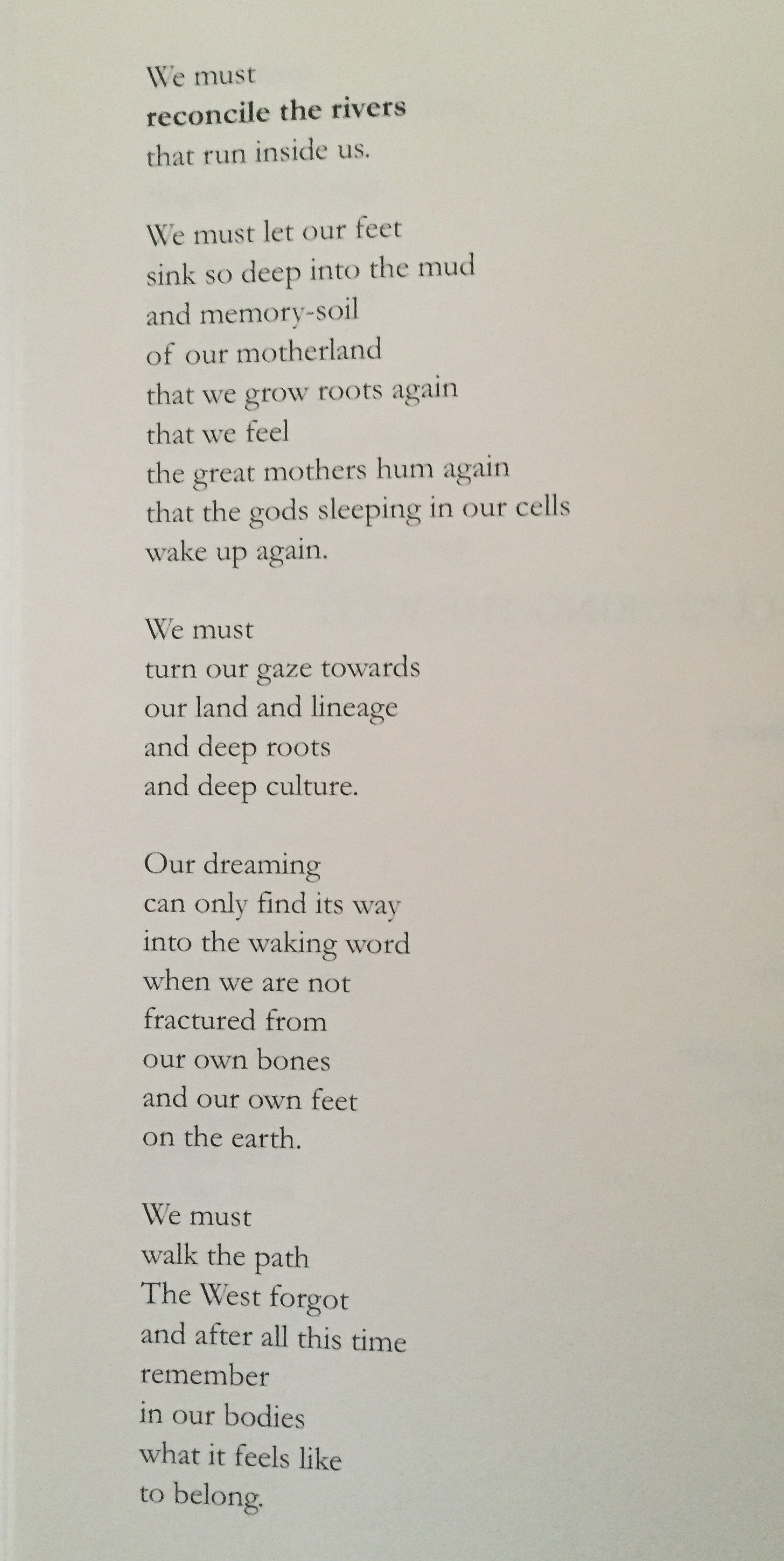
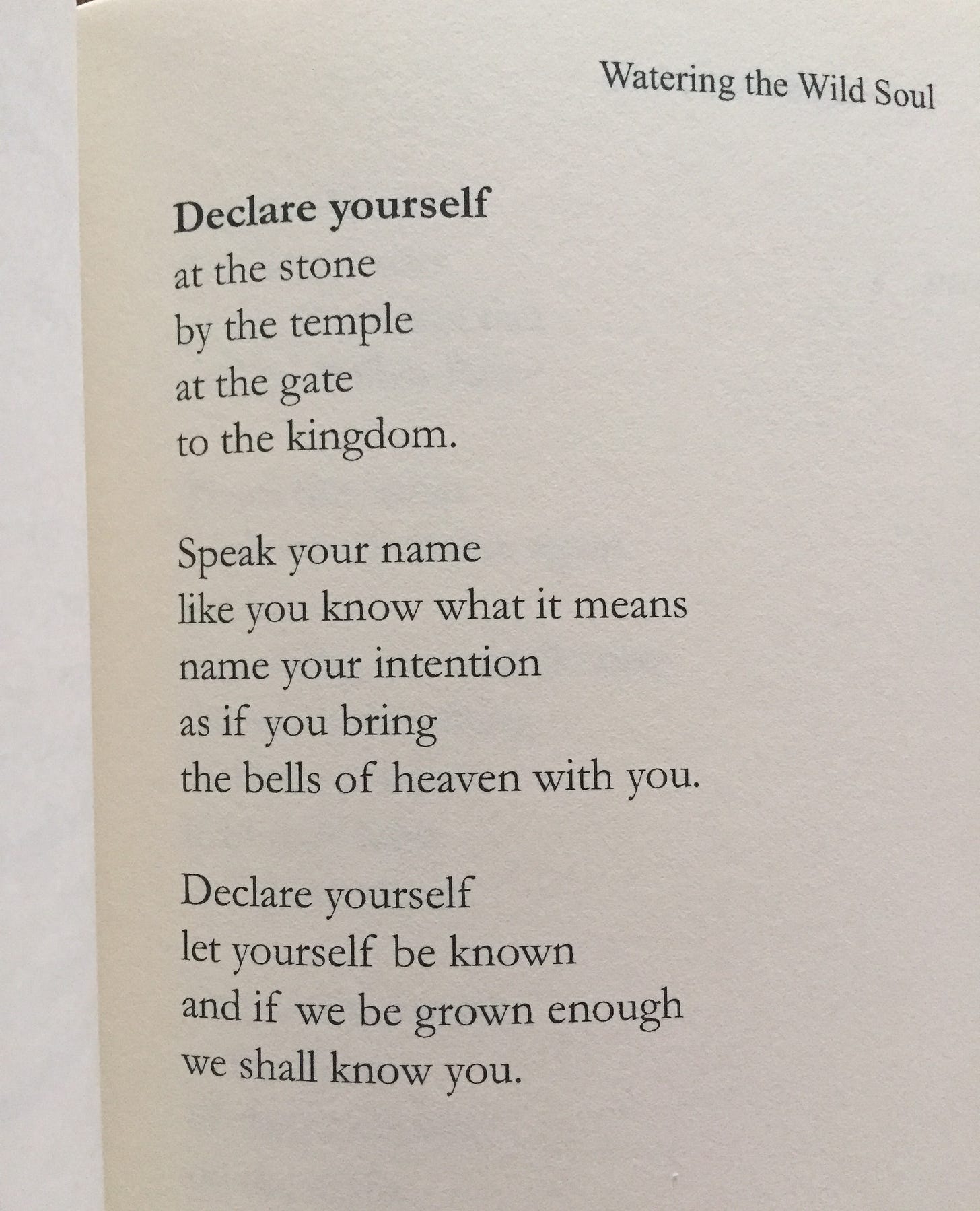
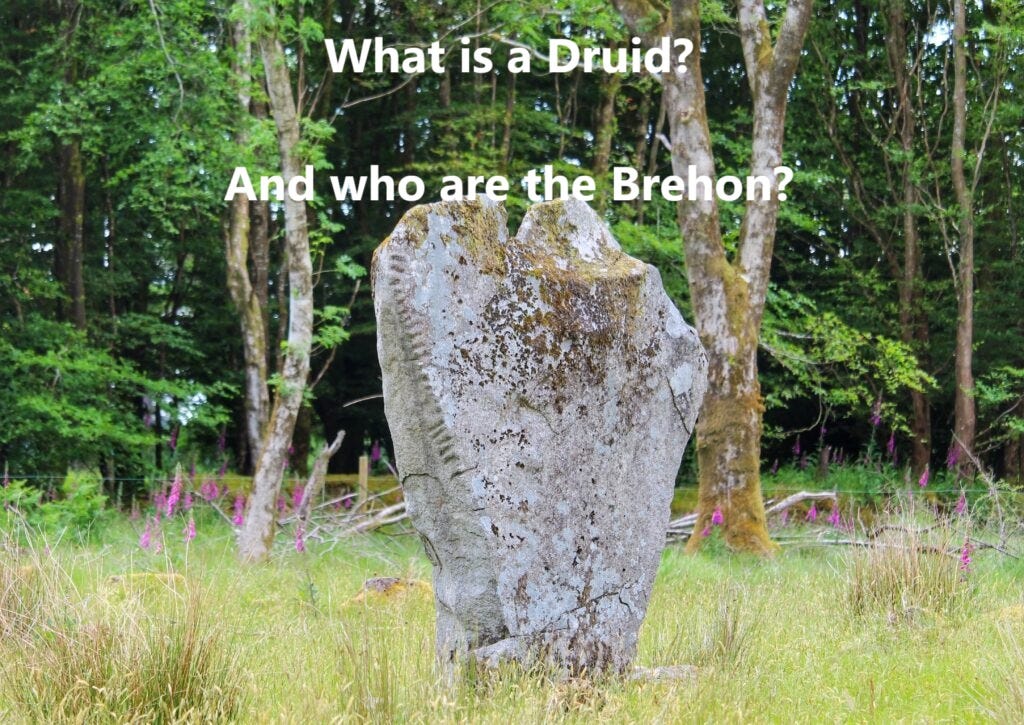
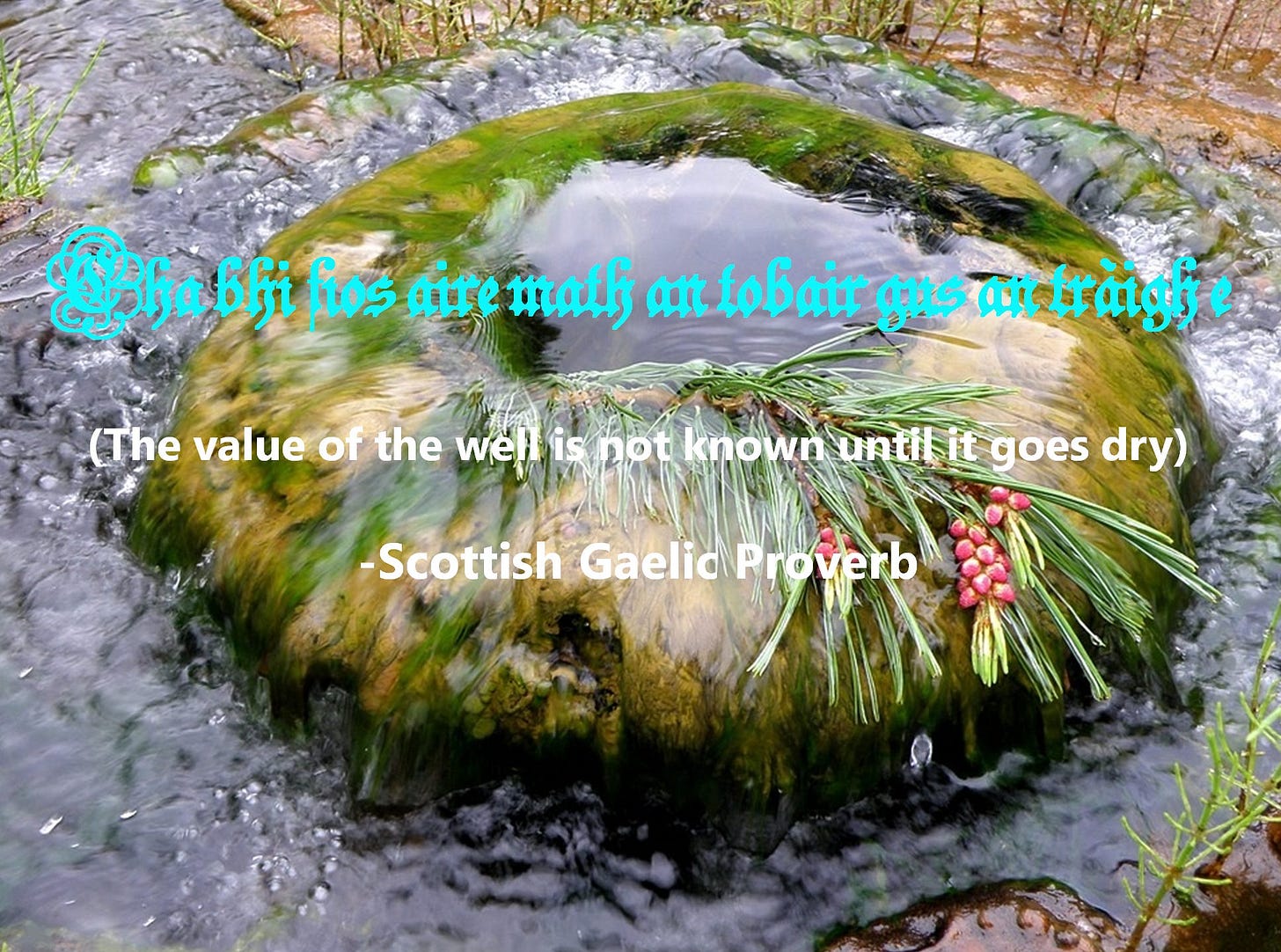
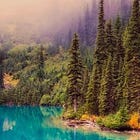
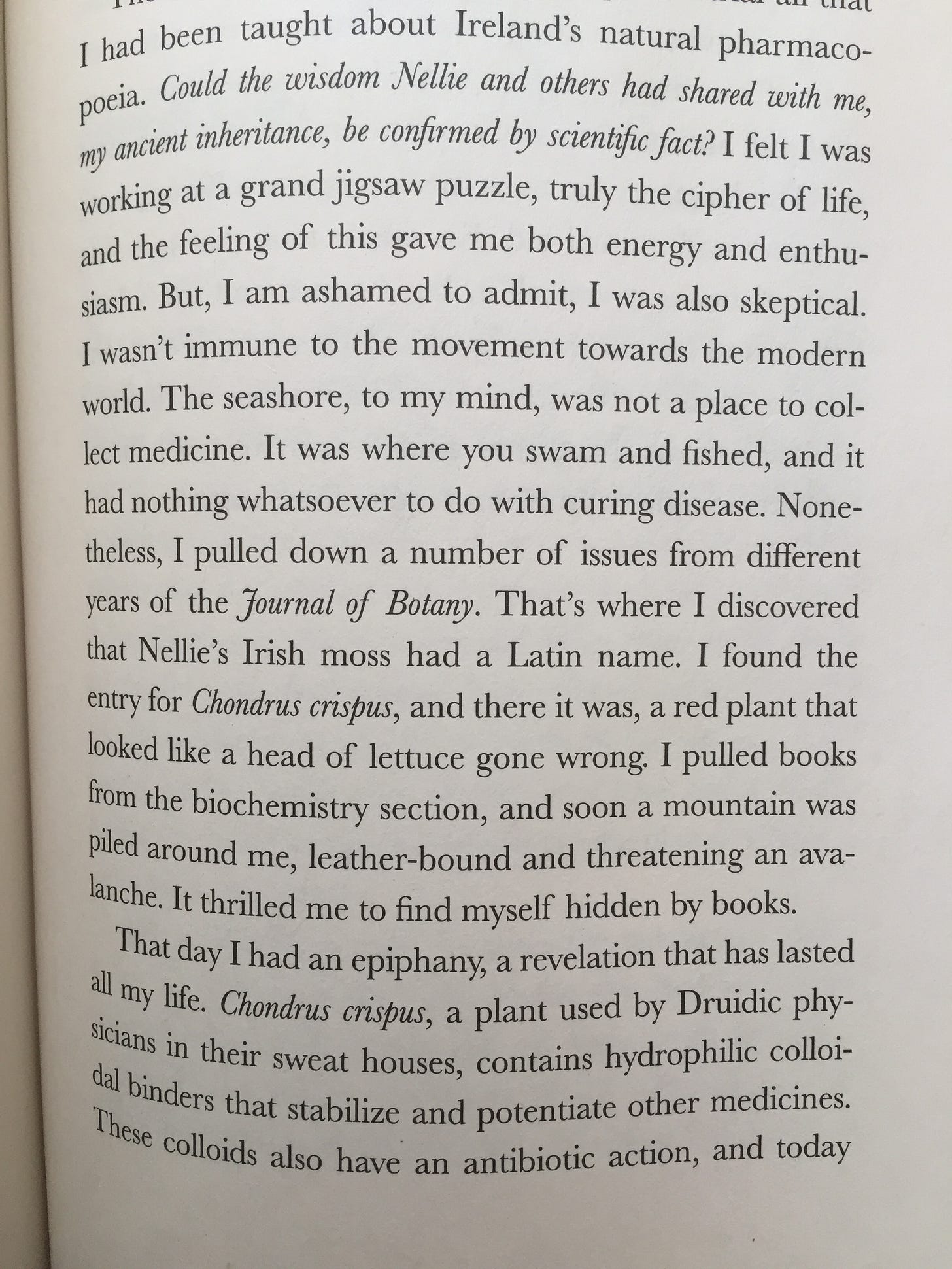
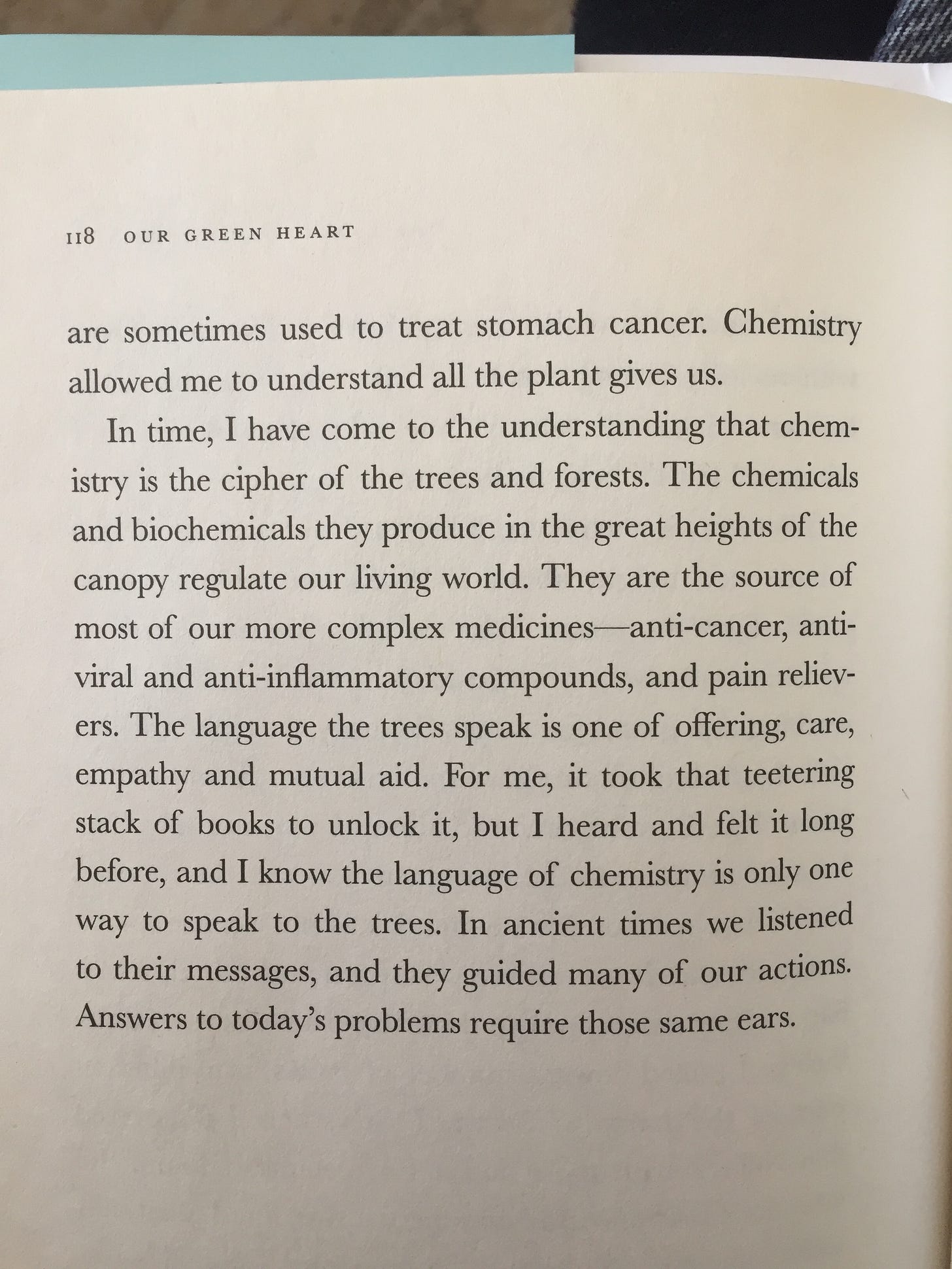
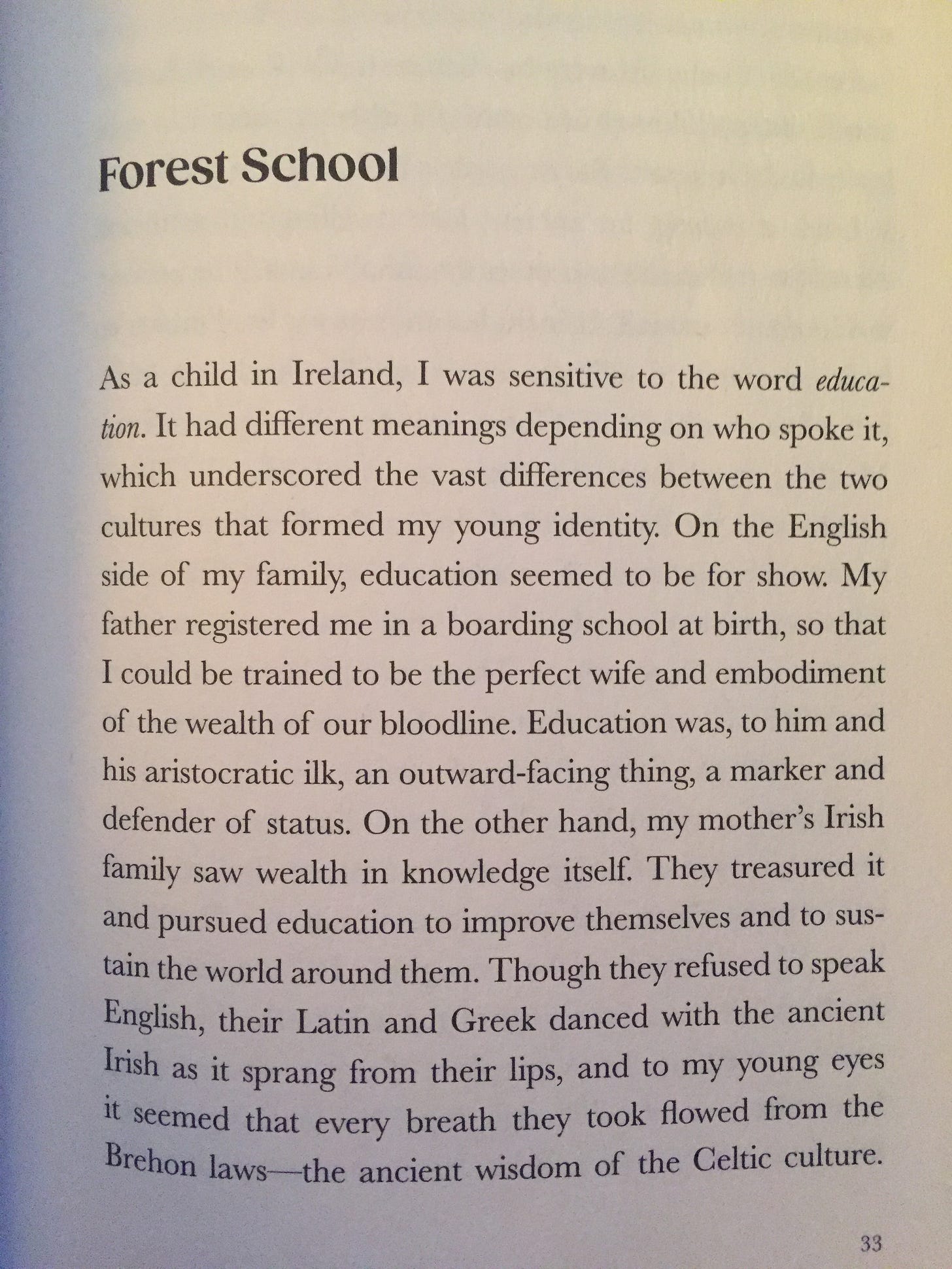
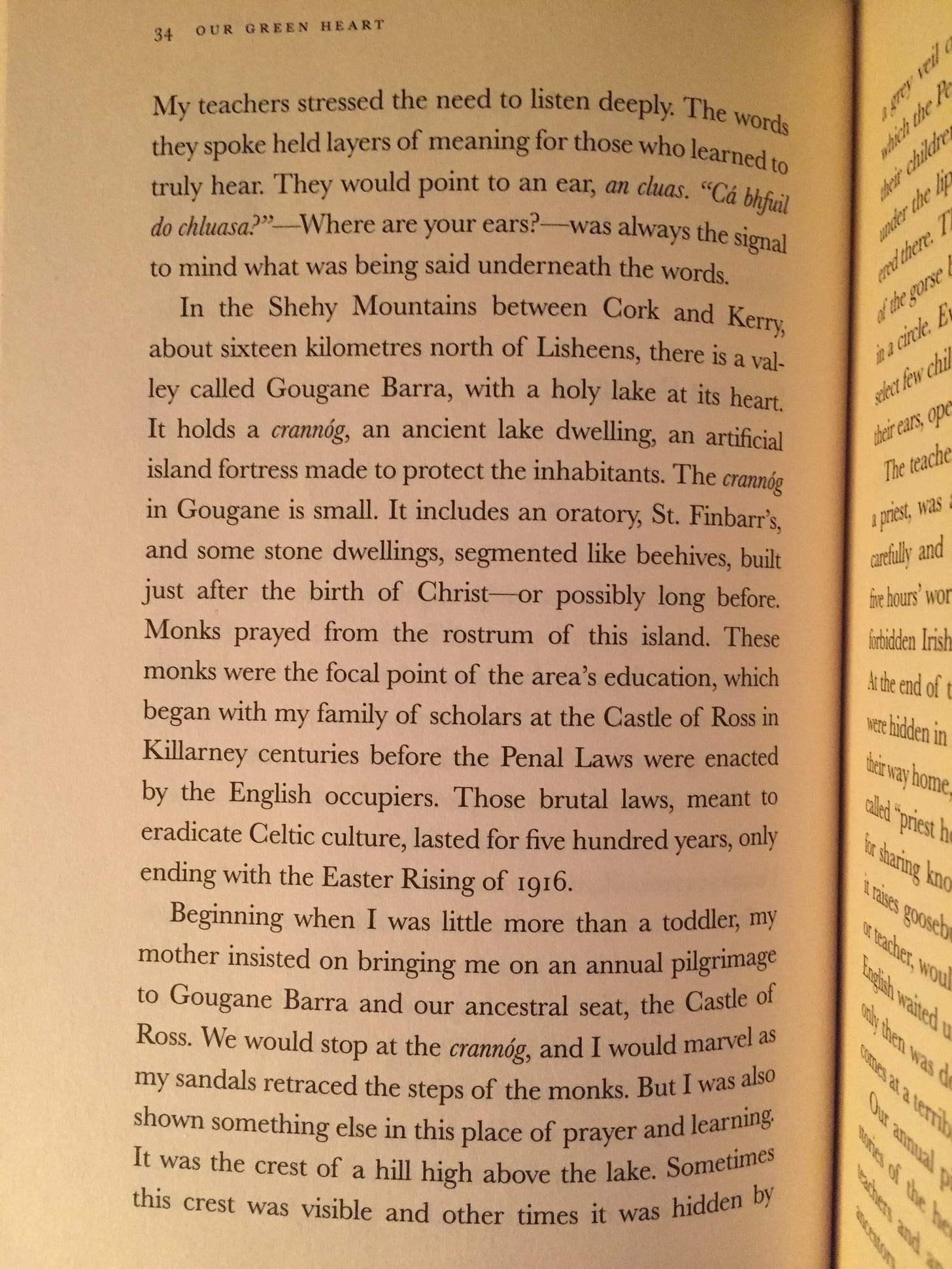
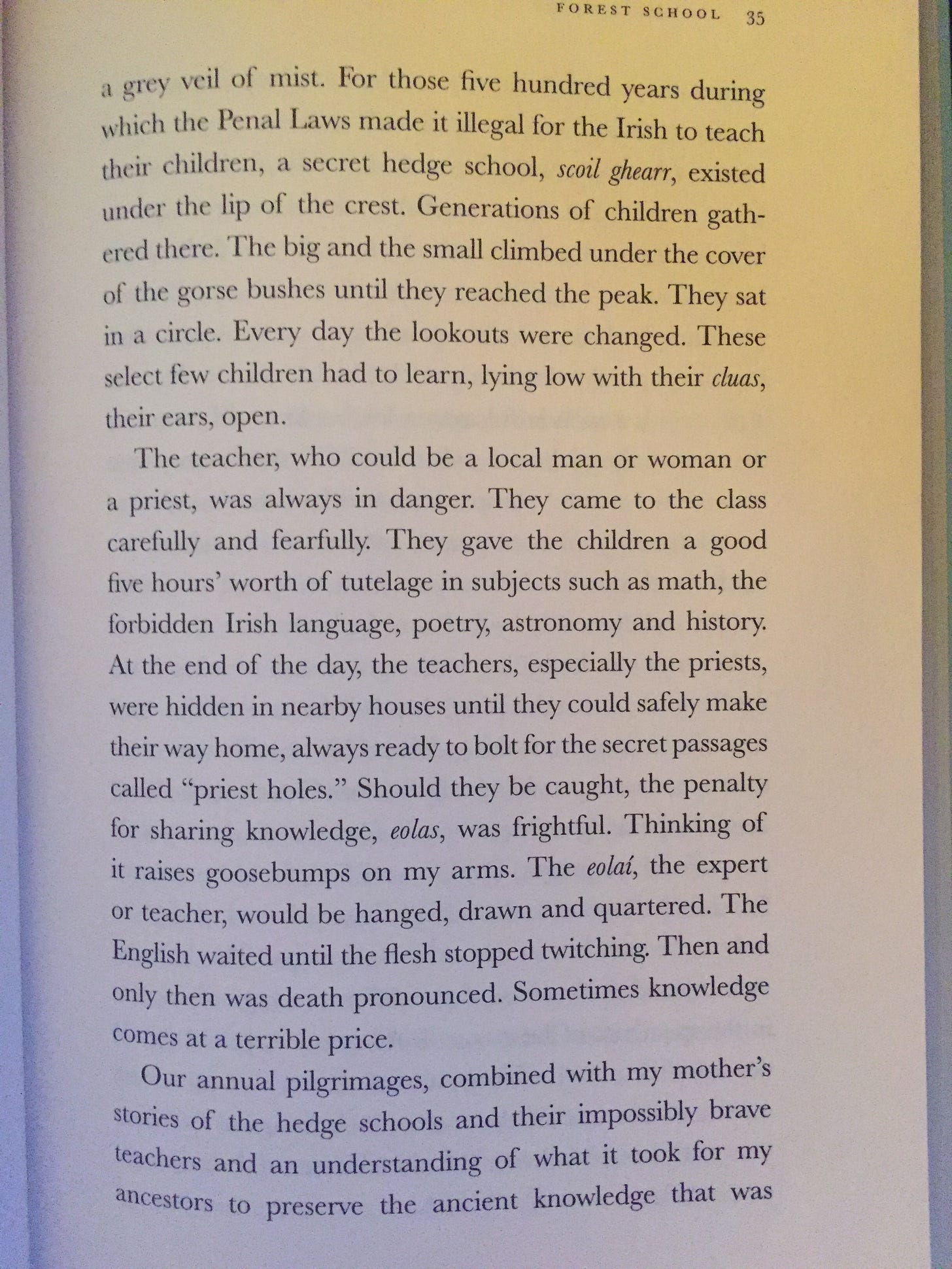
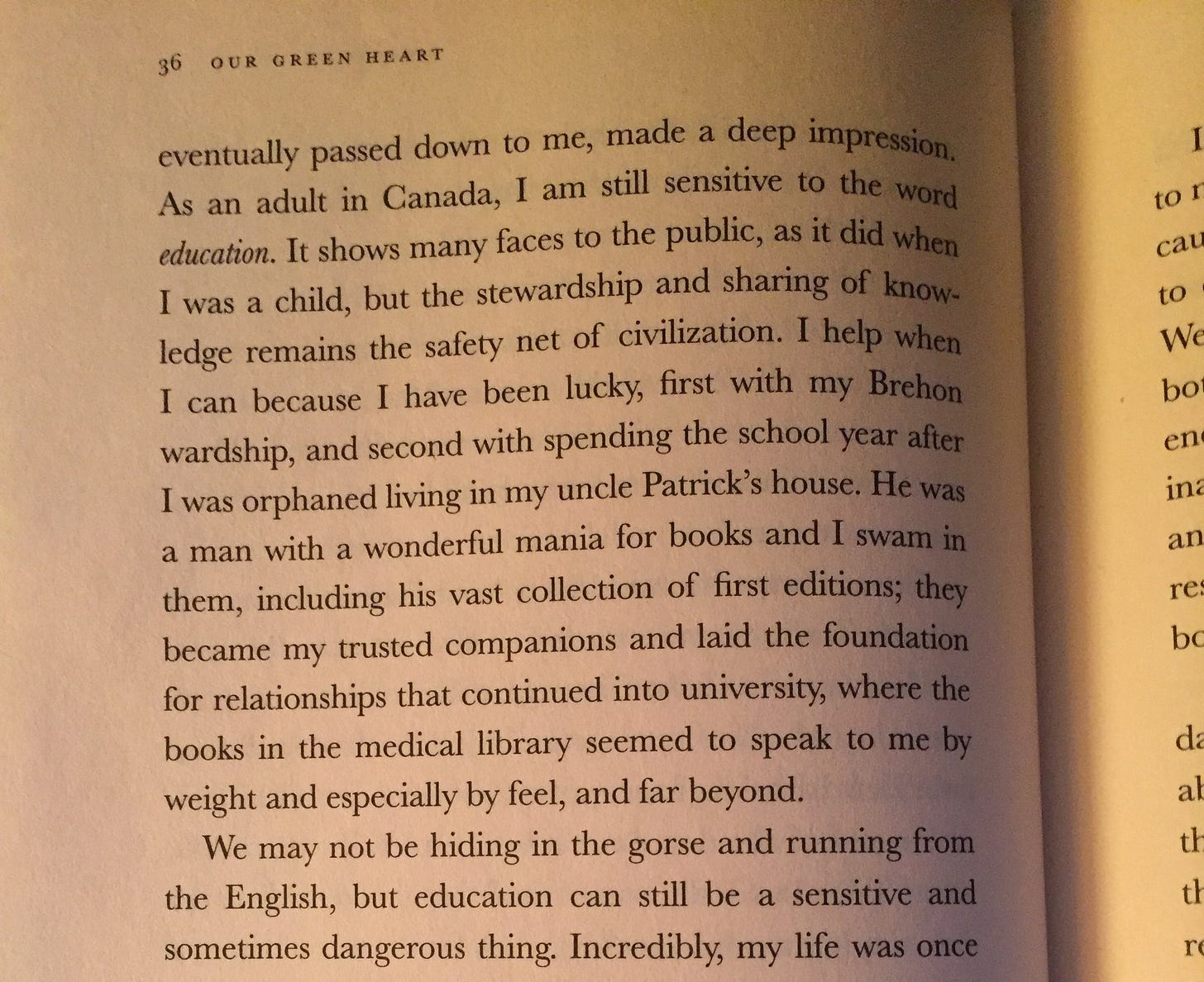

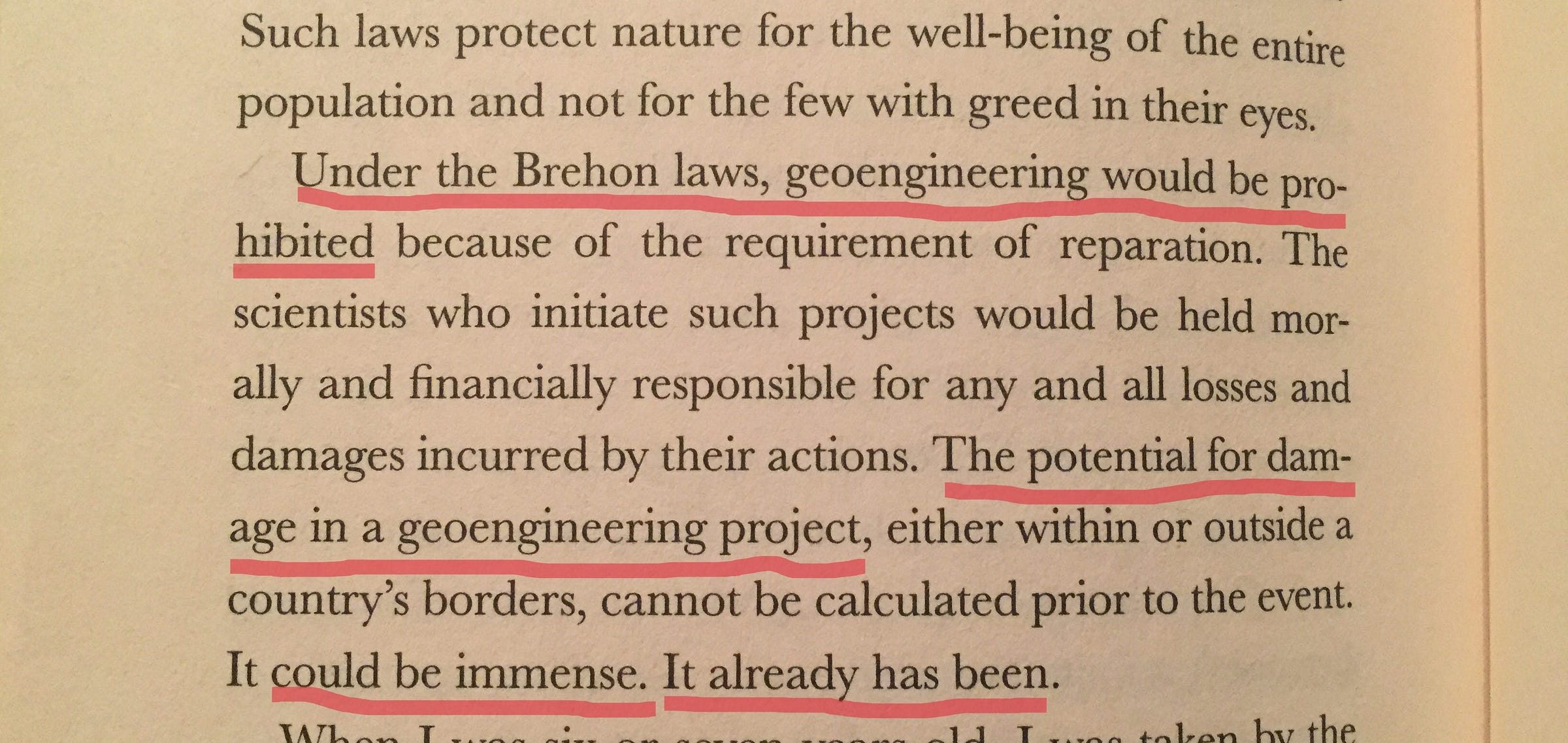
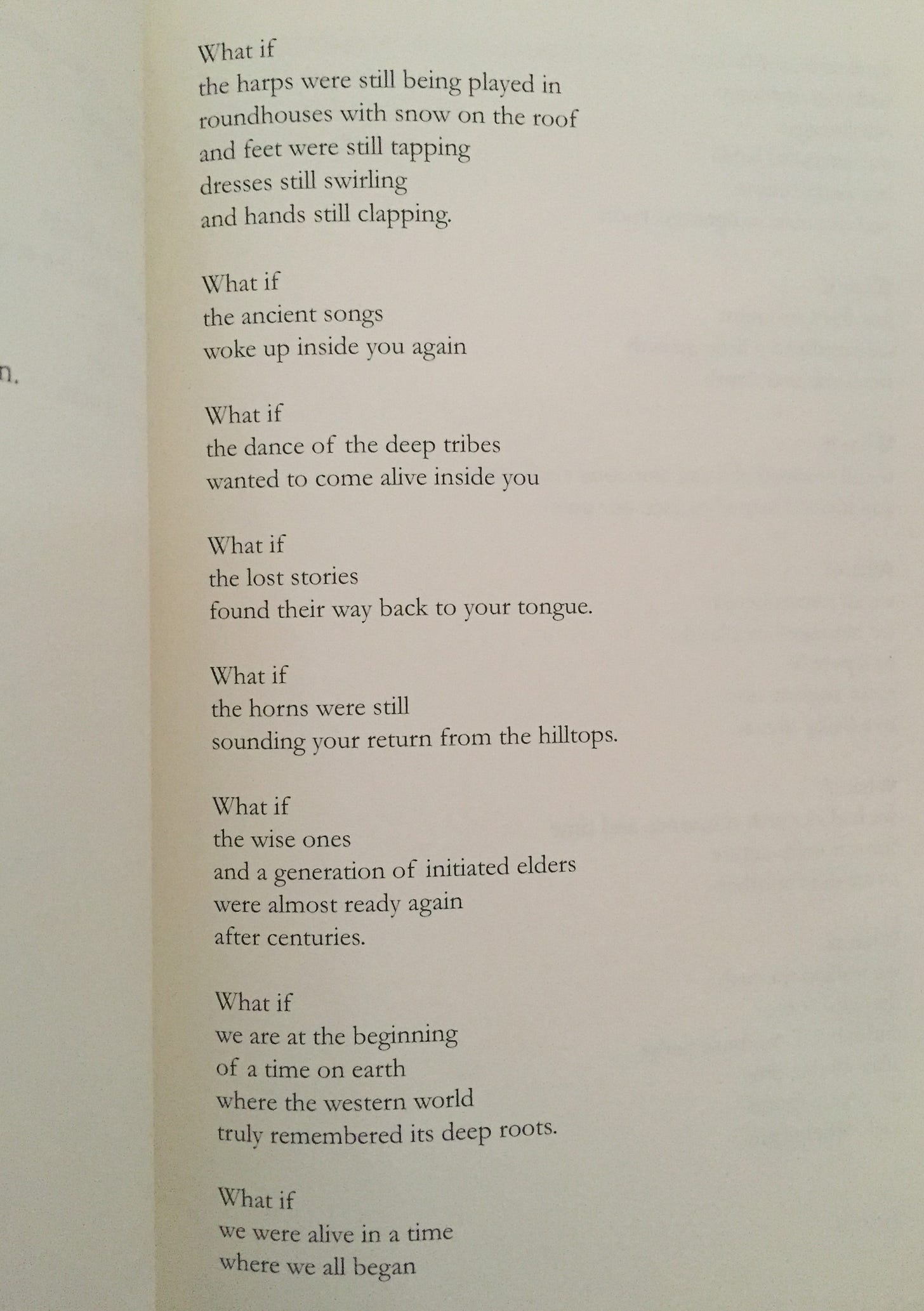
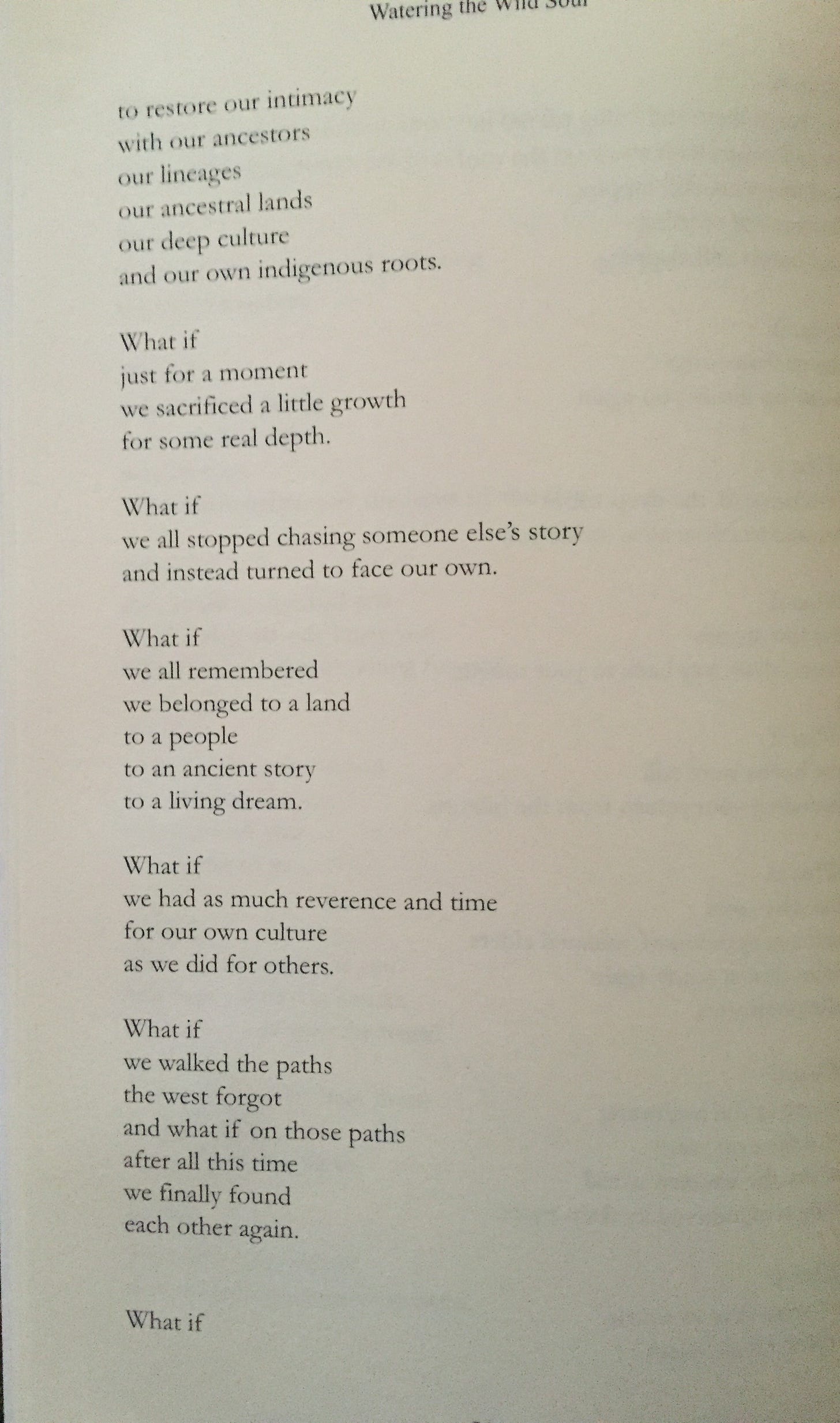
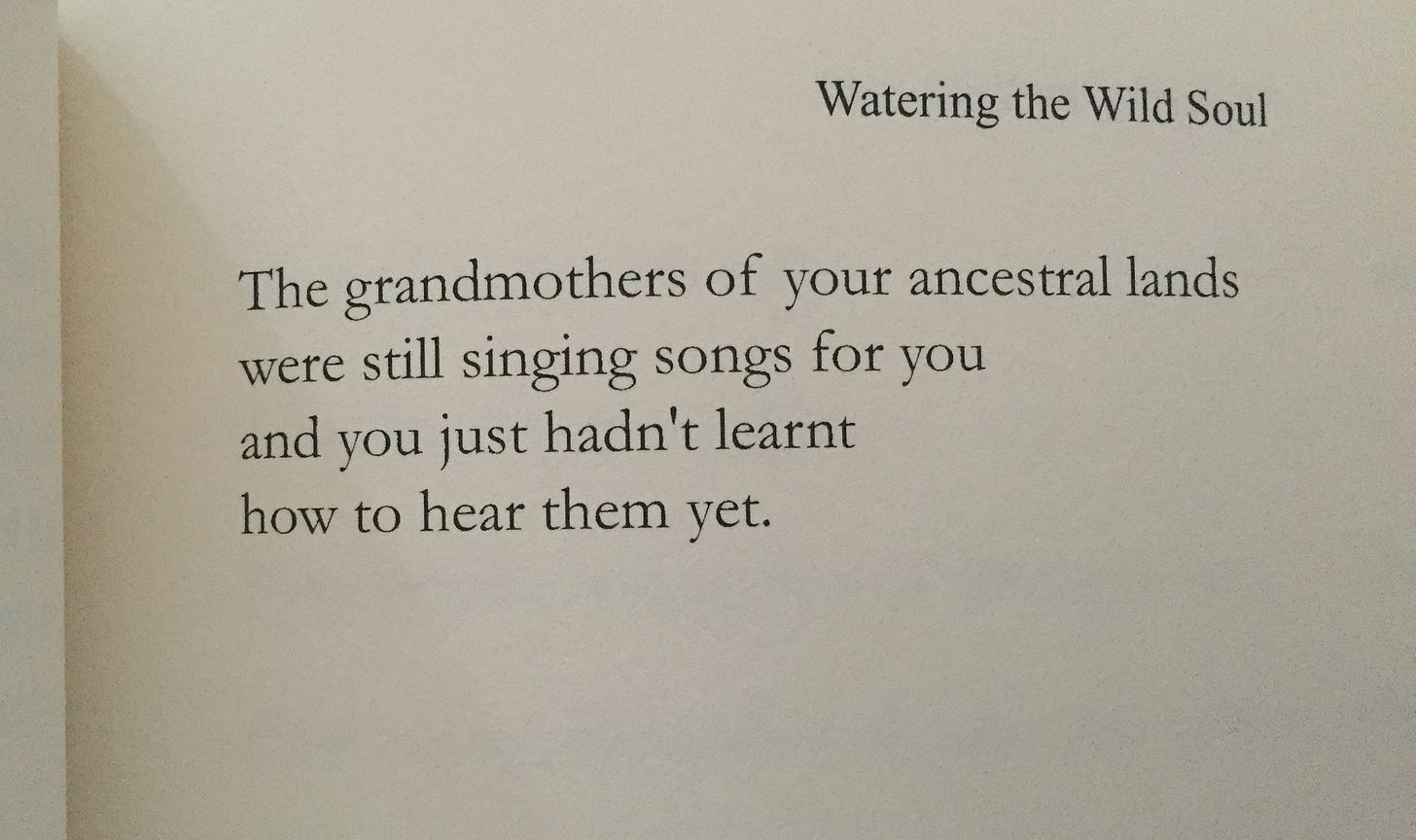

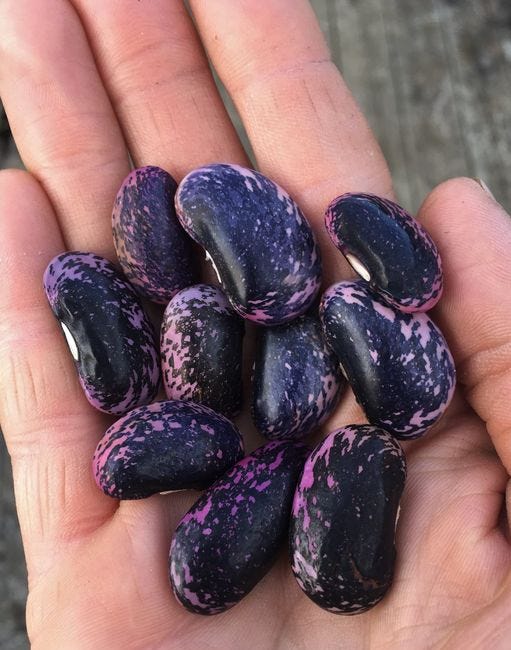
I think it's important to remember we're all indigenous to the earth, even if we're mongrels and generations removed from our roots. We all come from tough, resilient lineage or we wouldn't be here.
I think you don't really know a person, without knowing where they came from. I cannot tell you my give names, because i made some people angry being awesome. But My irish clan is cassidy -healers- (i believe they worked with the MacGuires), adopted into the Kennedy and Cronin Clan. My most influential Wendish ancestor Is Helge. One of those was a deprogramming expert, so. here i am. Good to meet you! anyway i have already written about the magic of the elements, their challenges, and the way they interrelate, elsewhere.